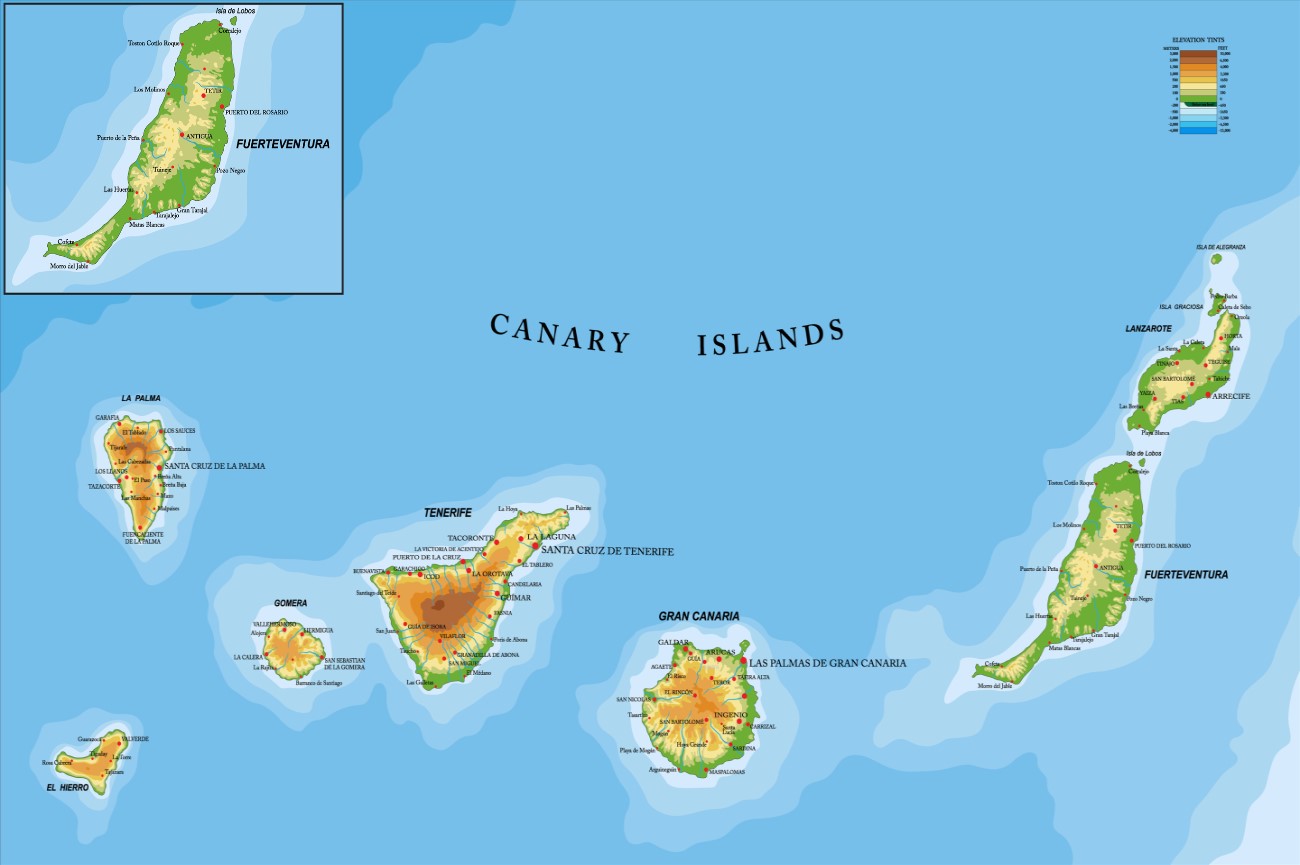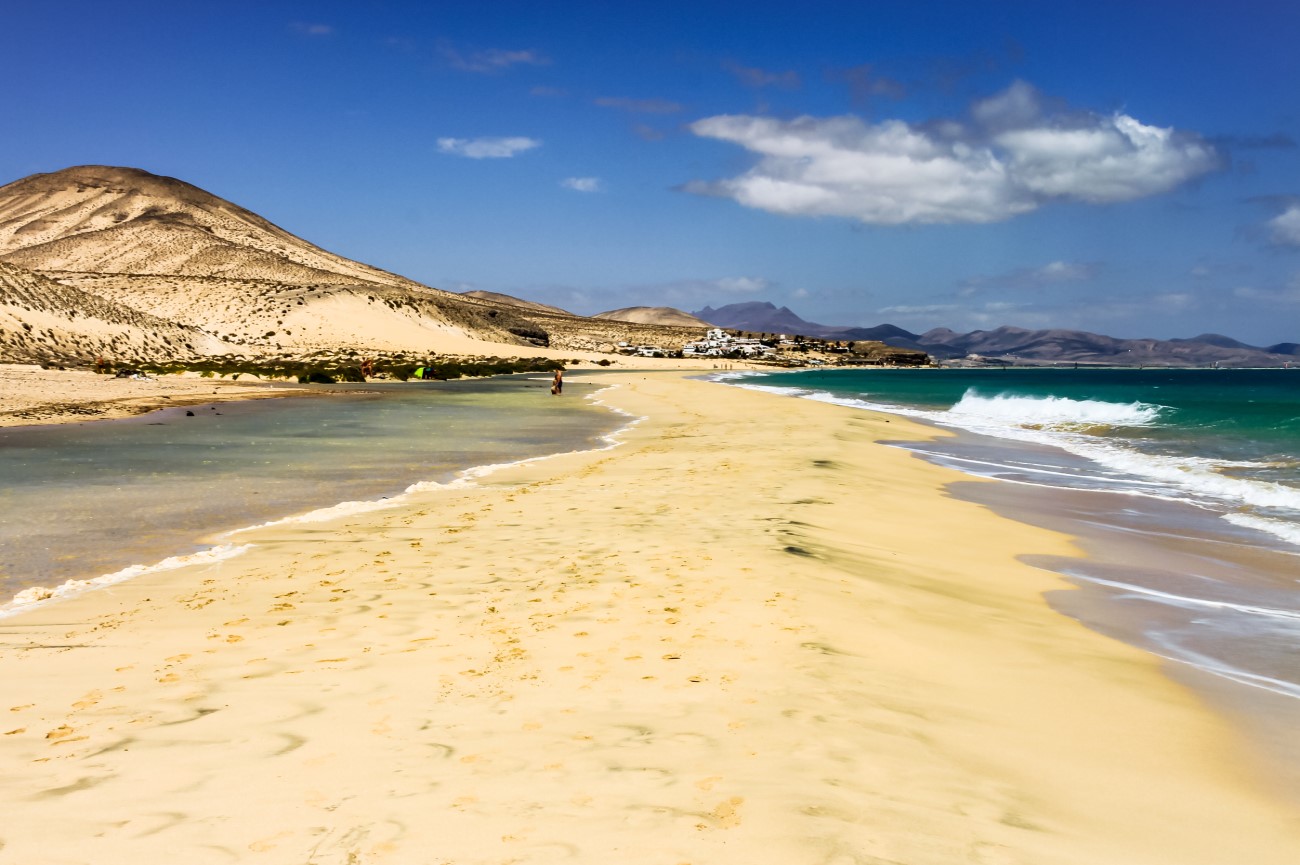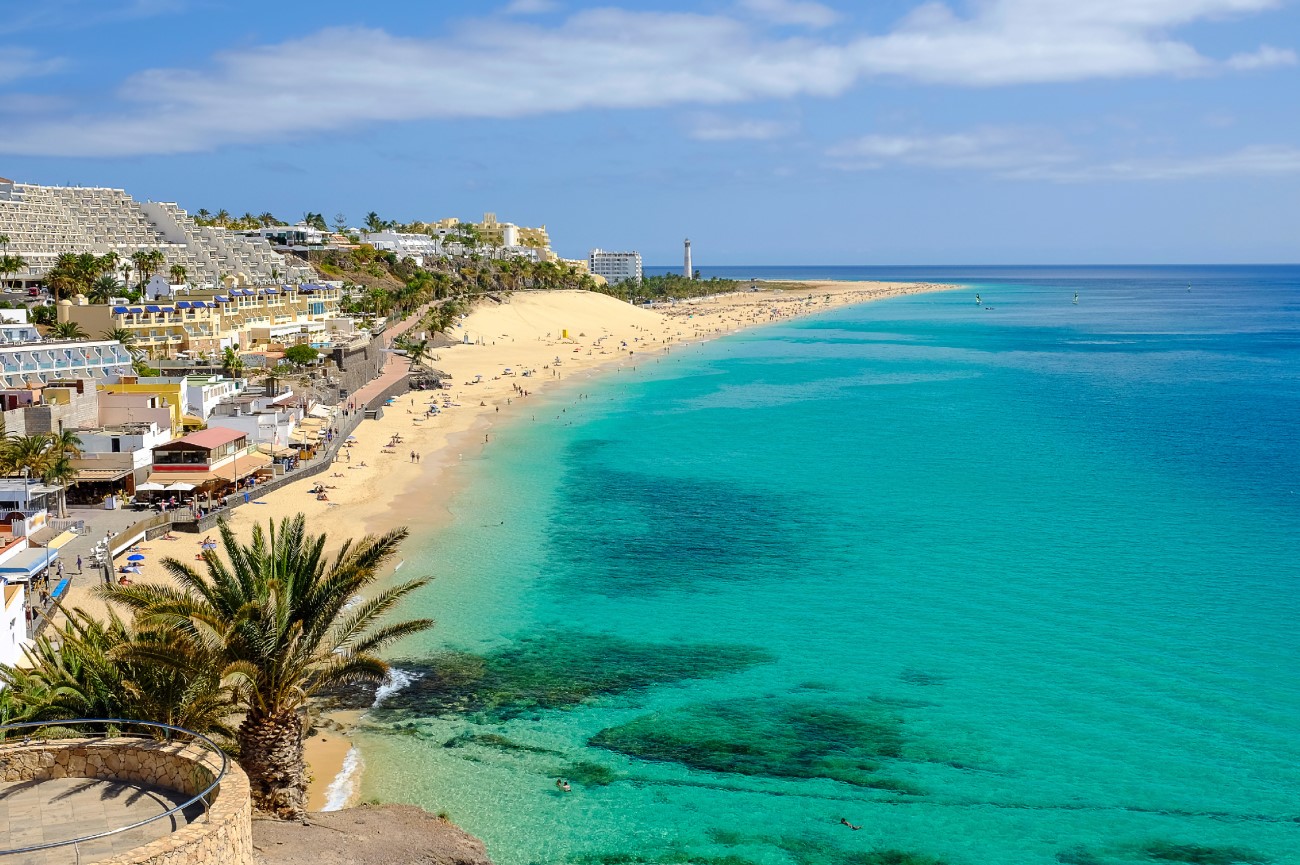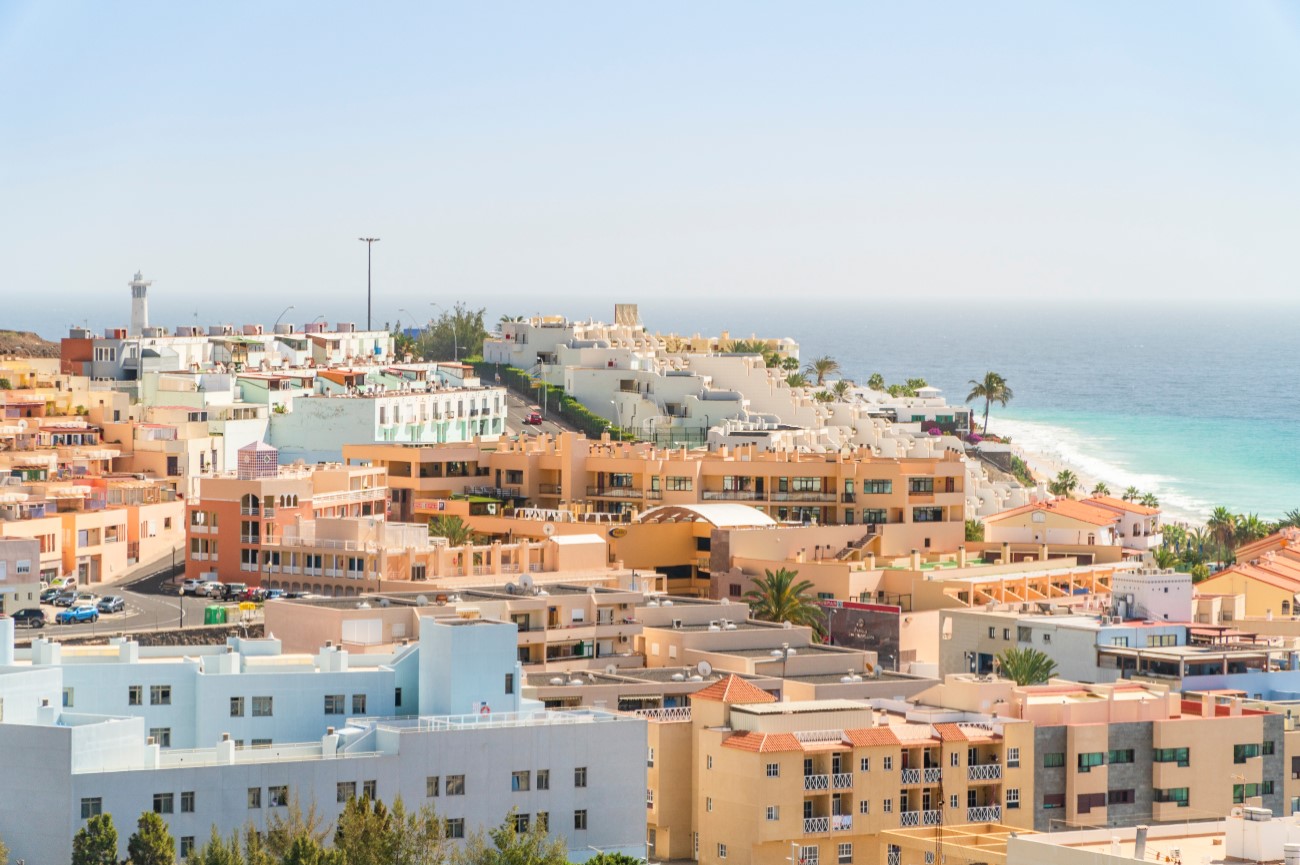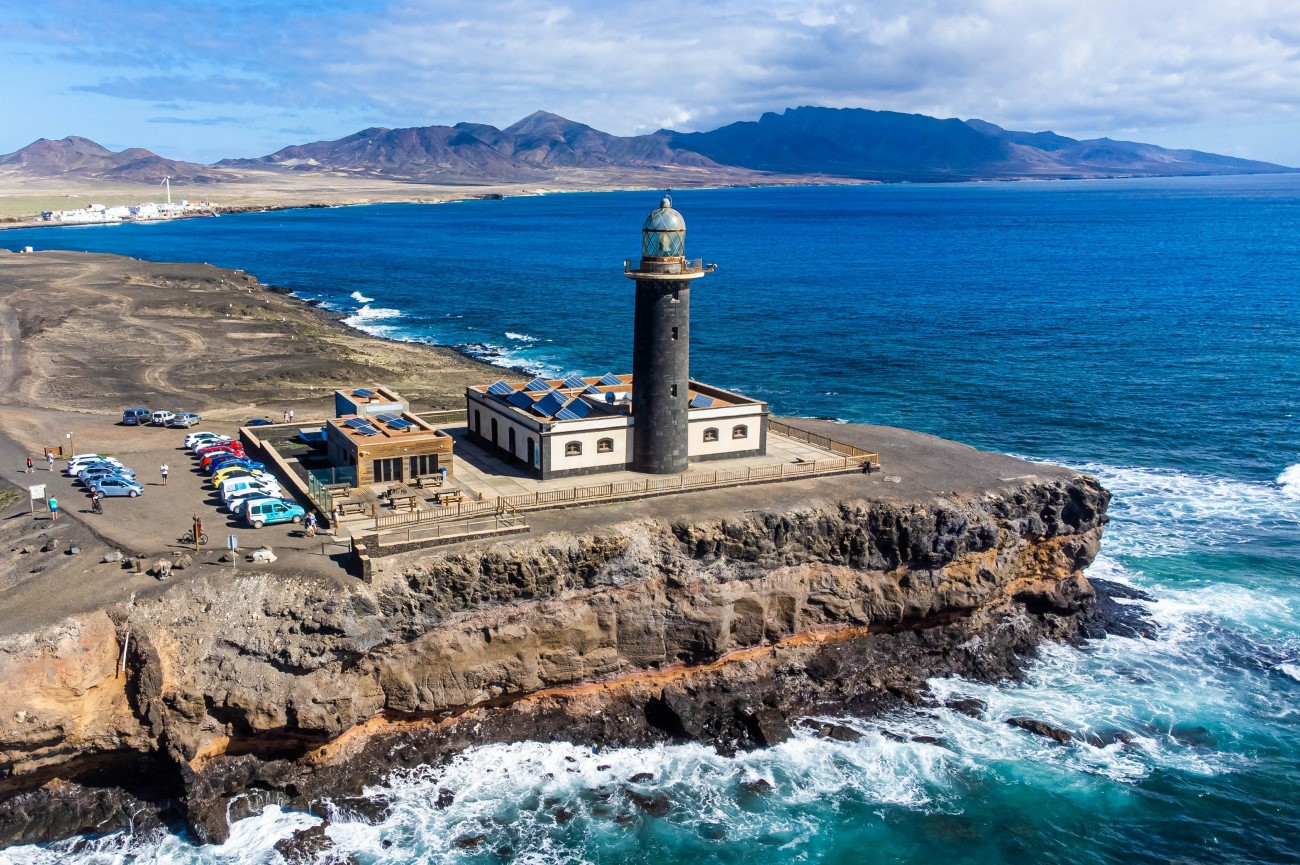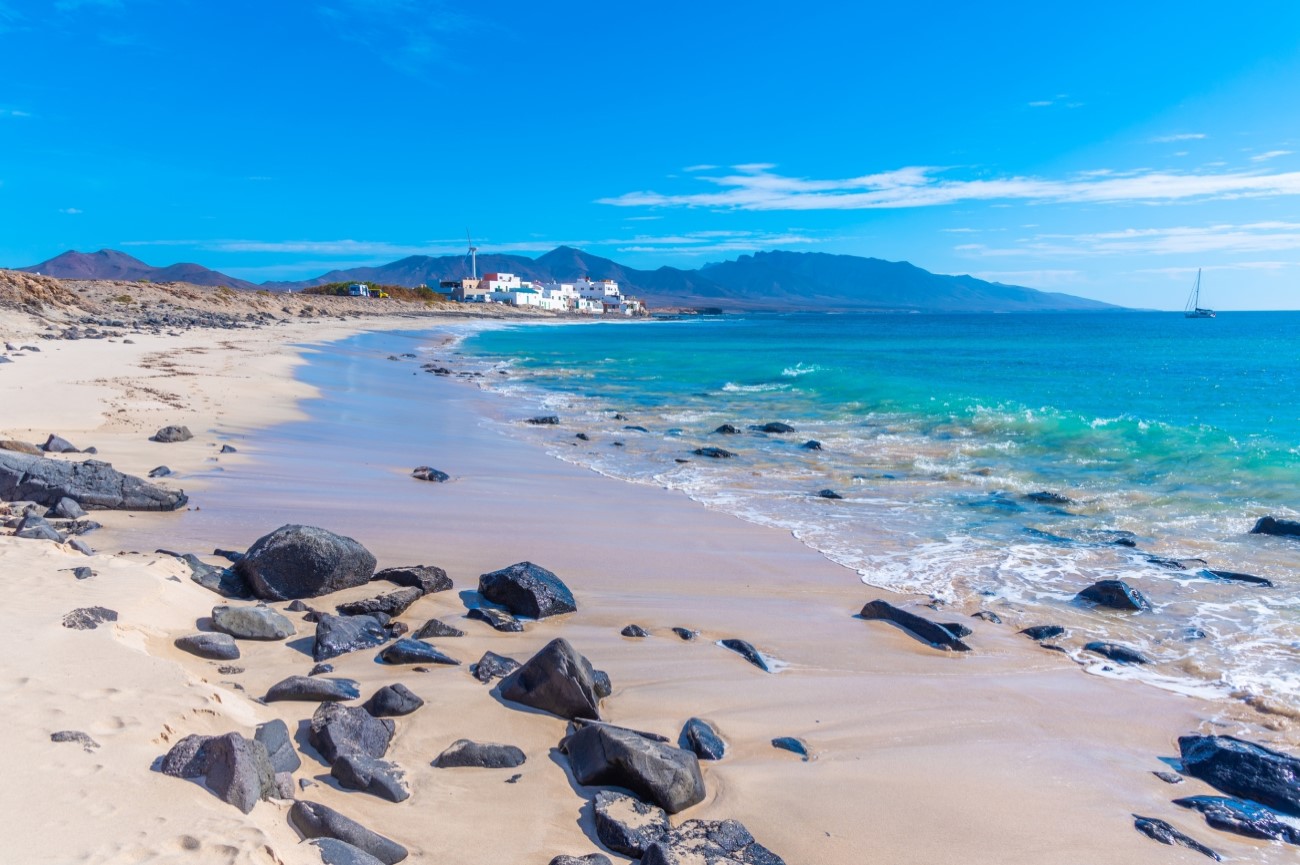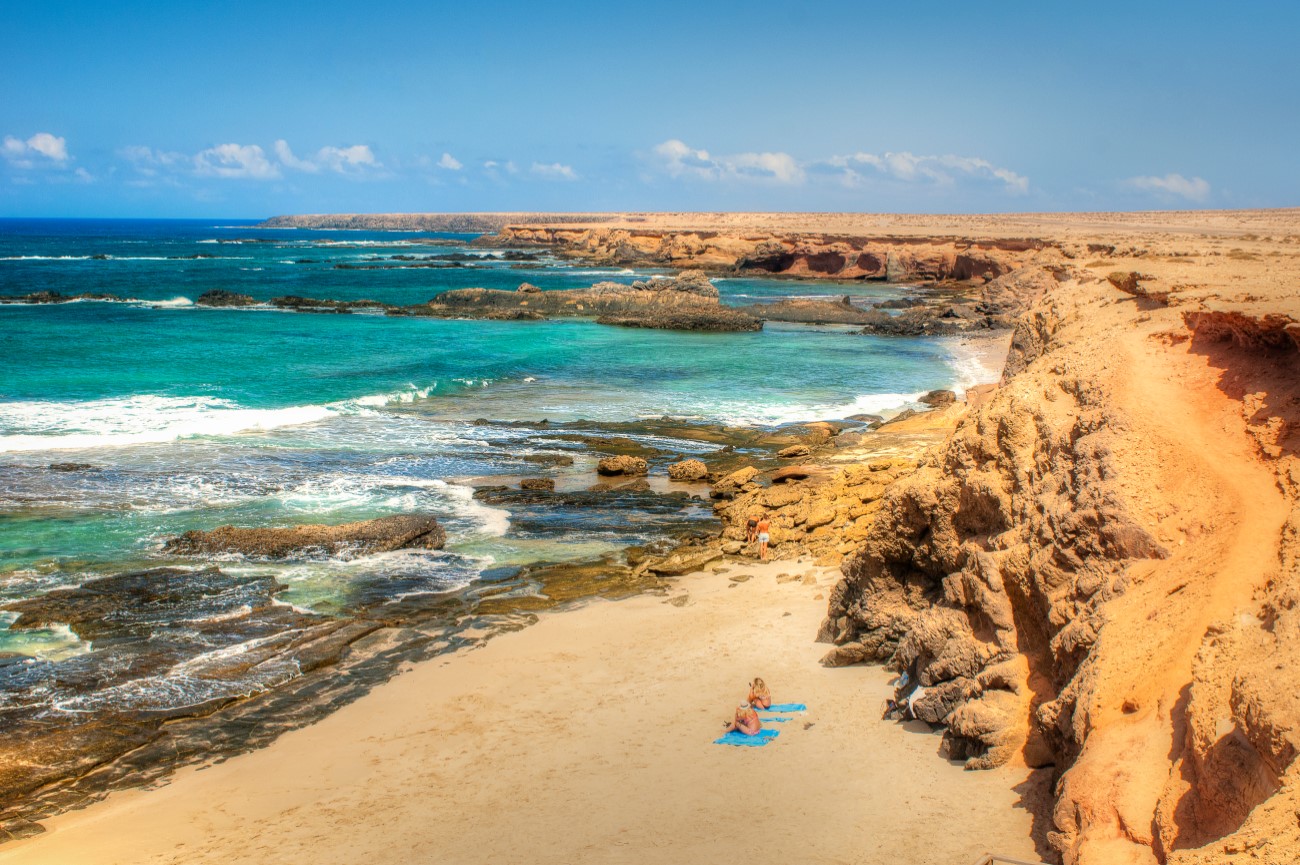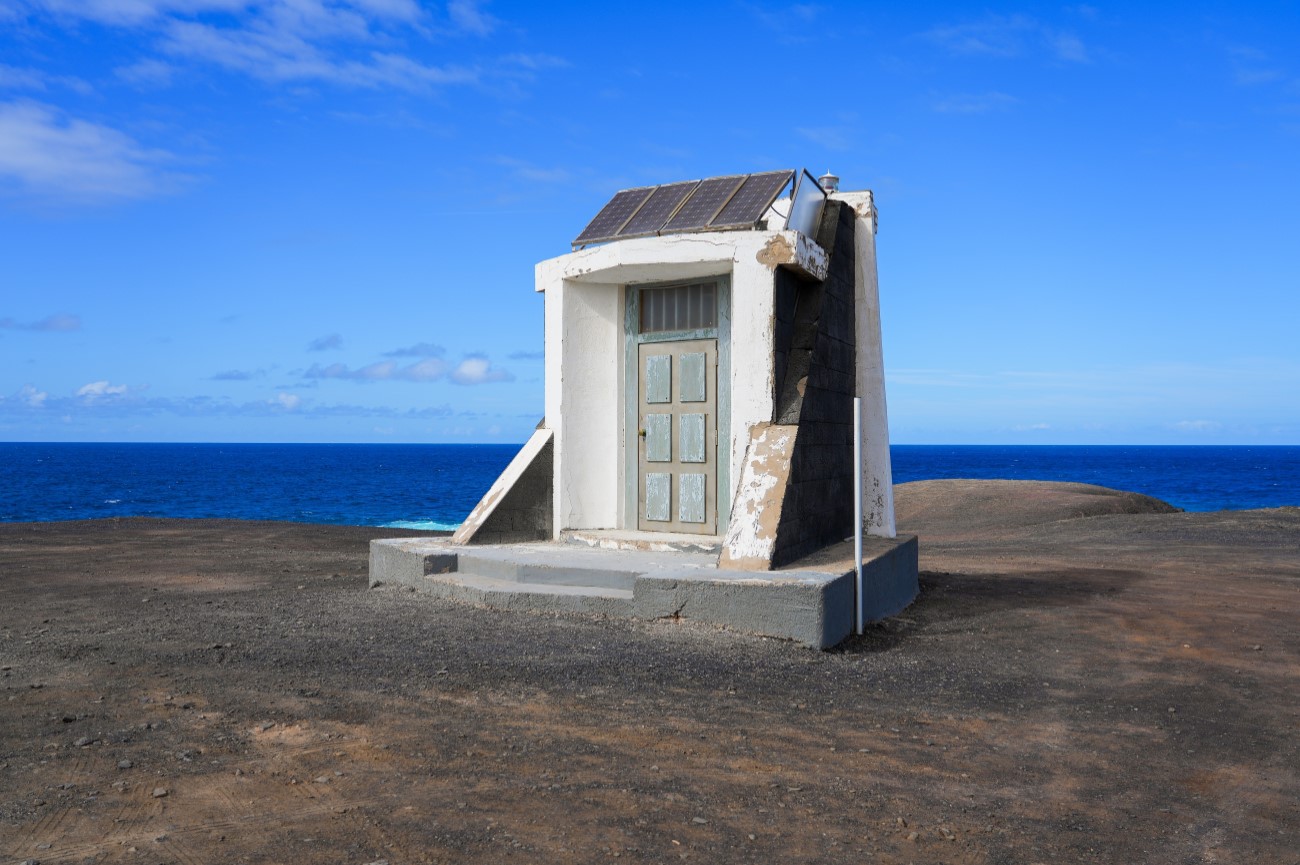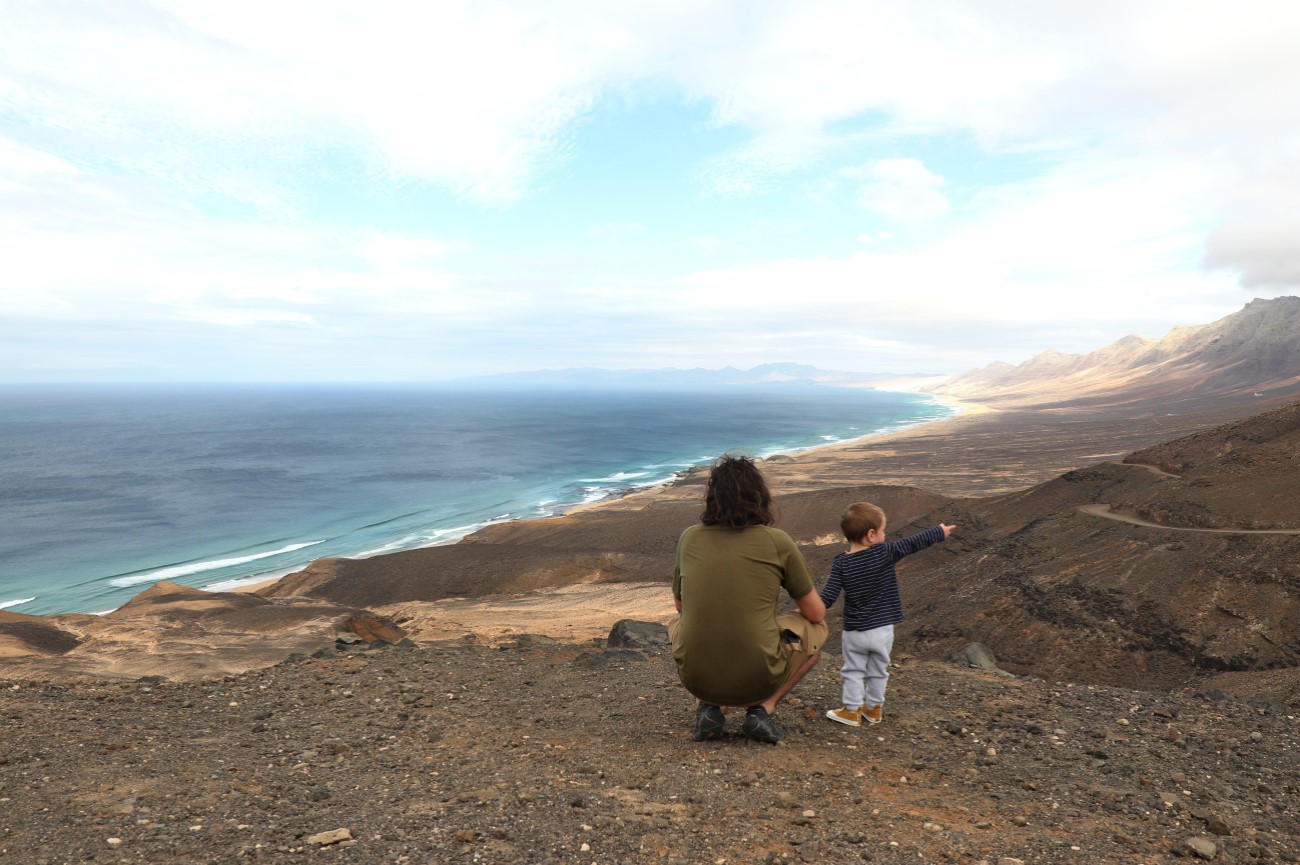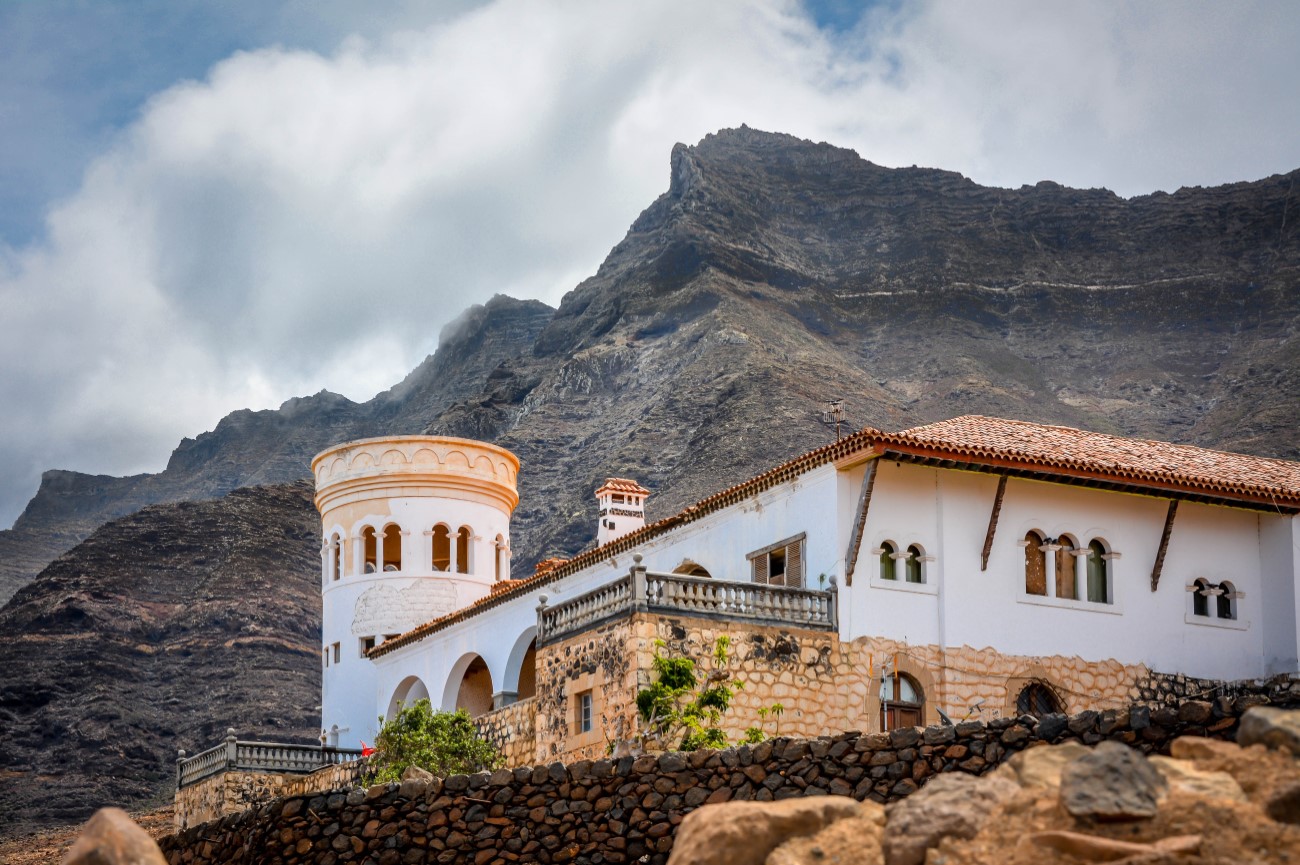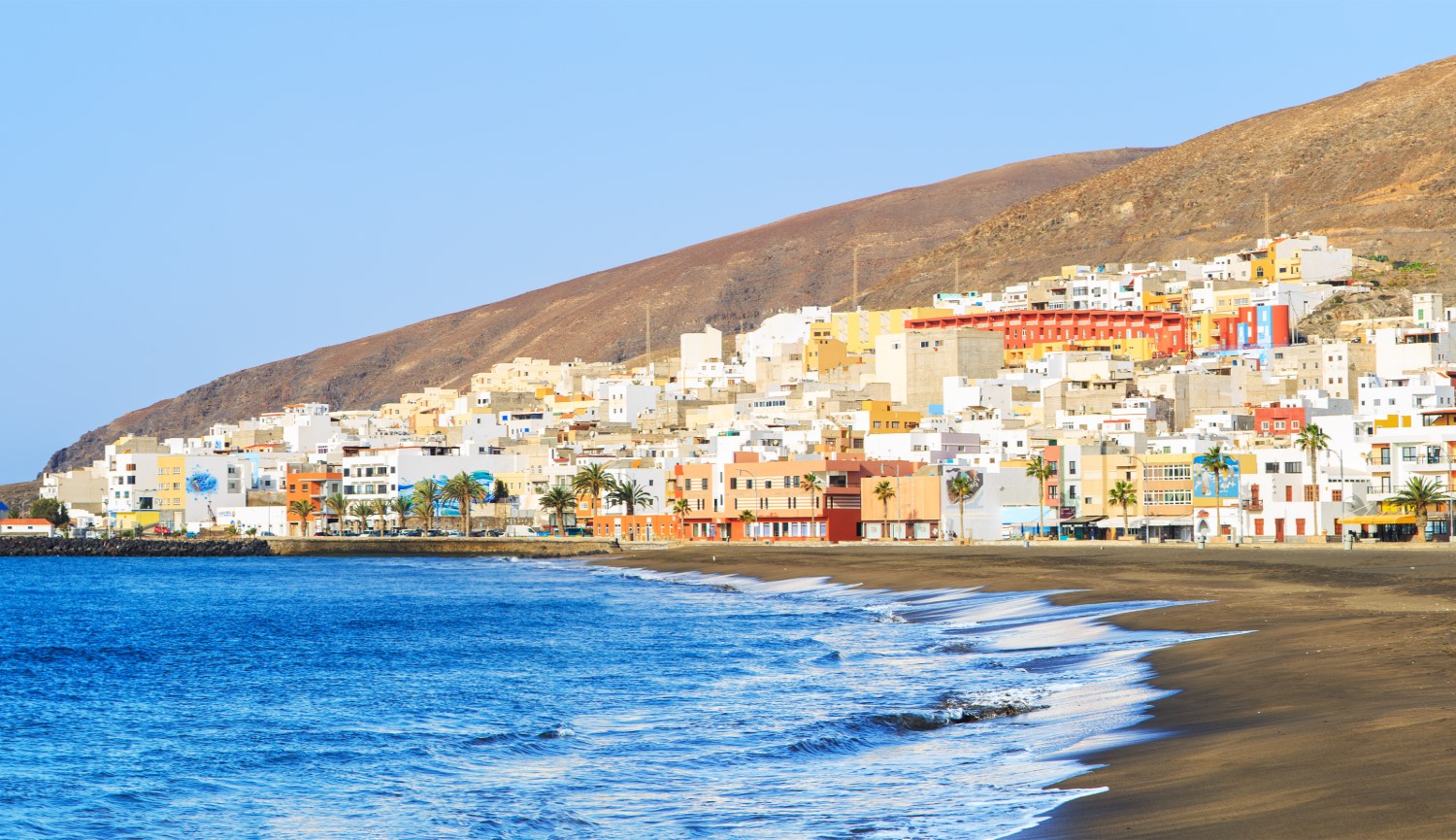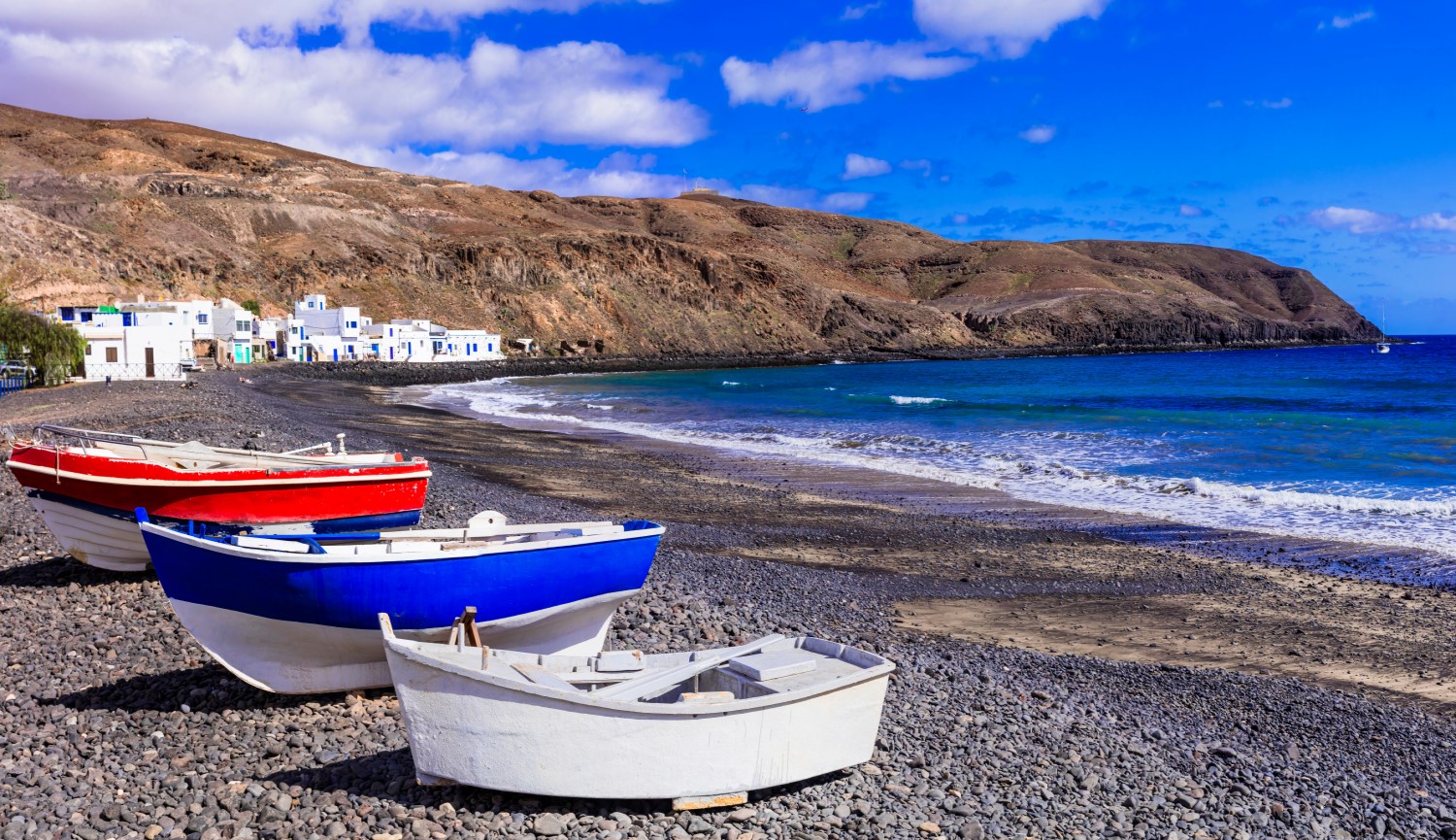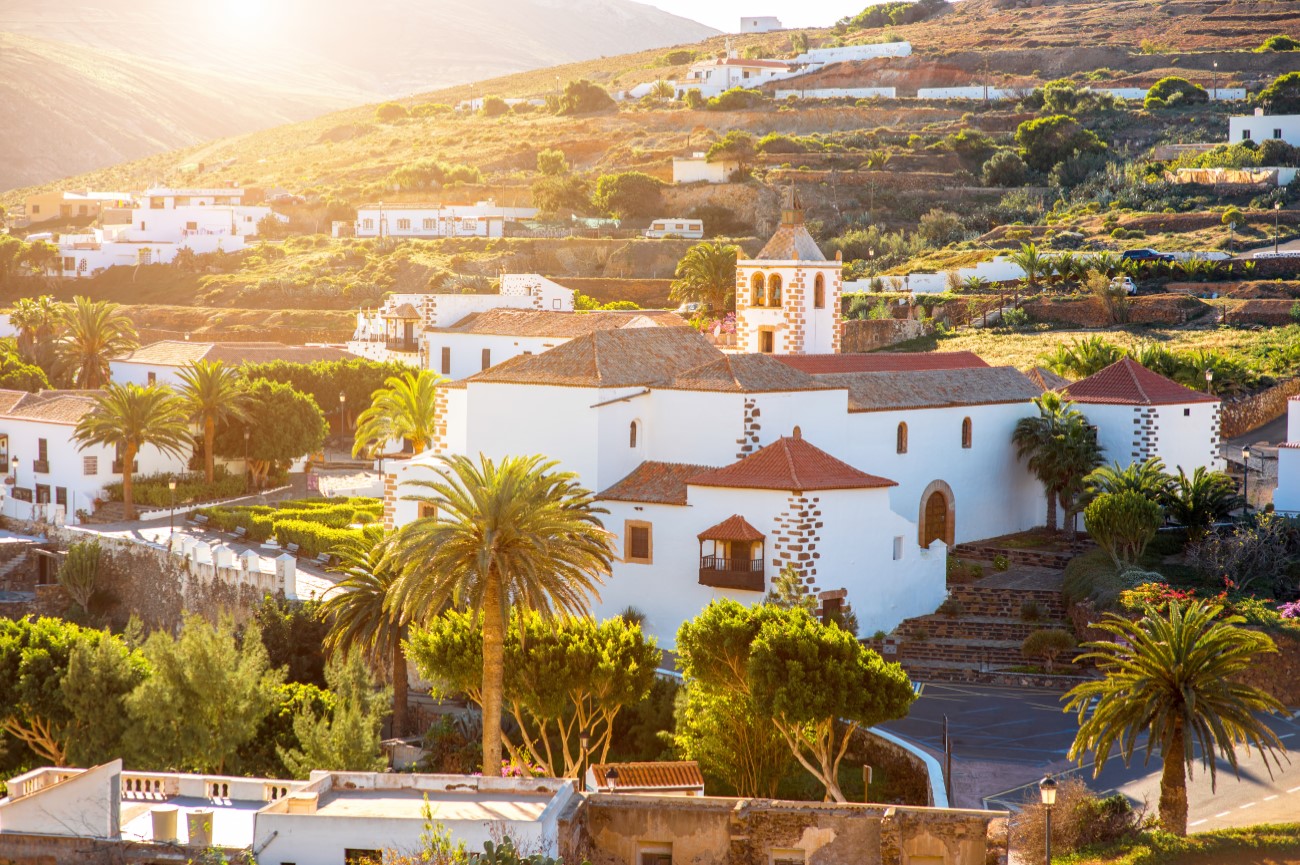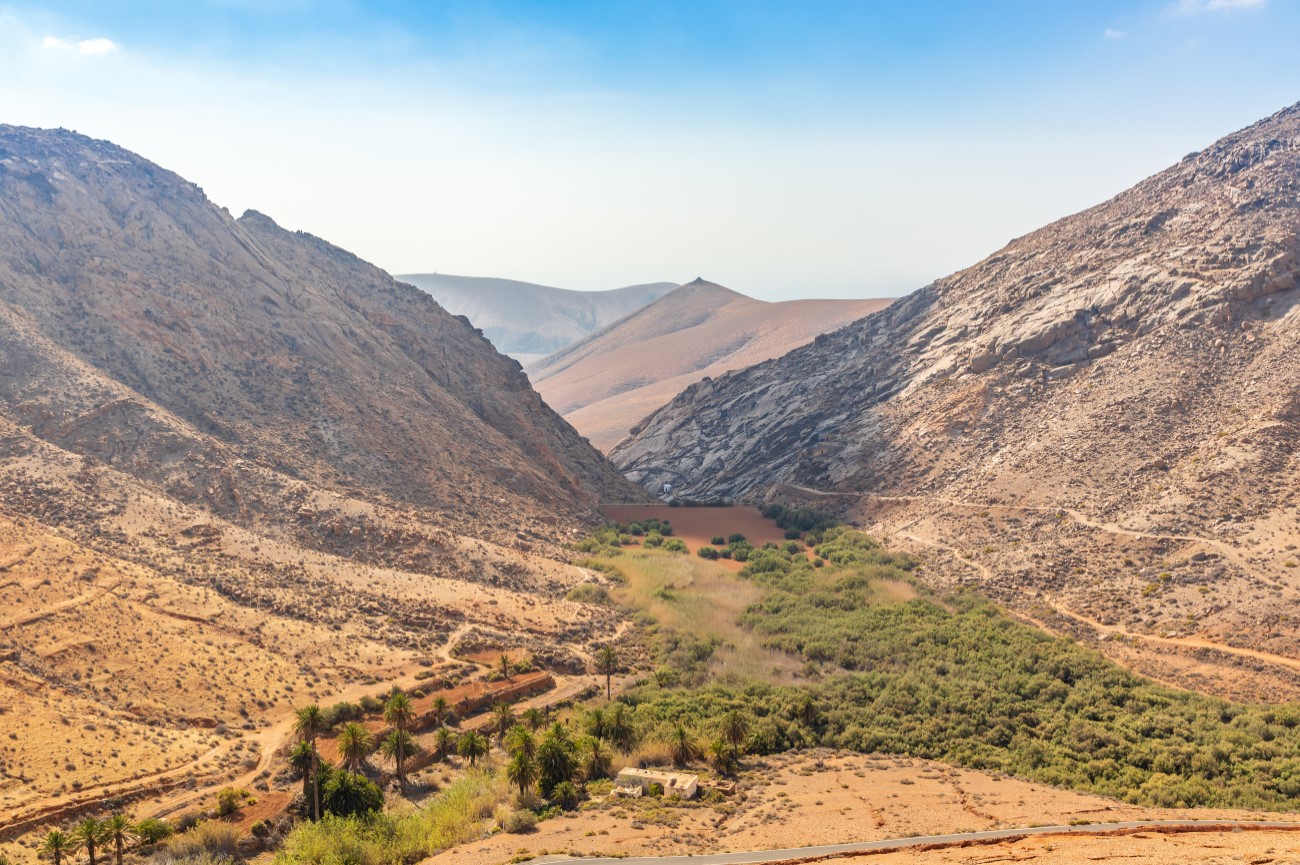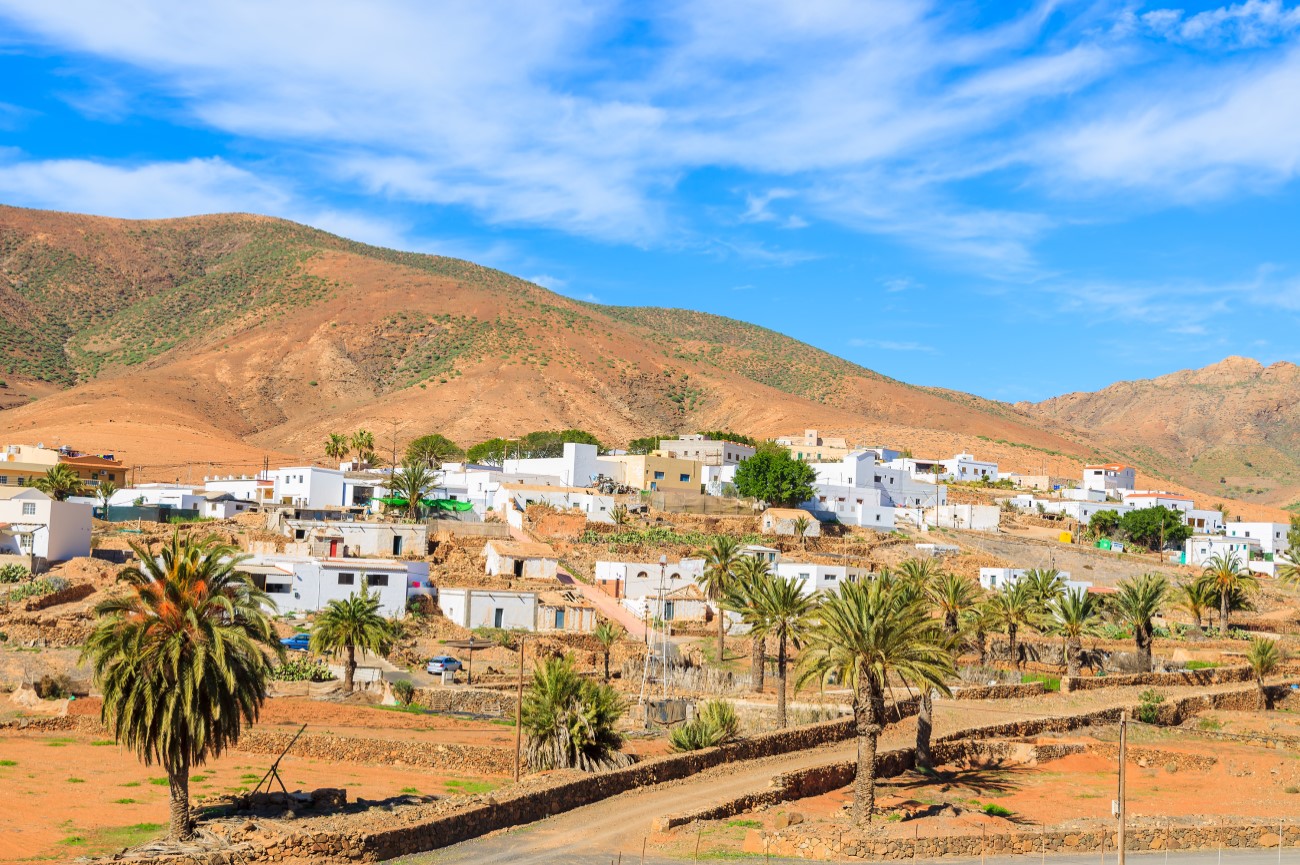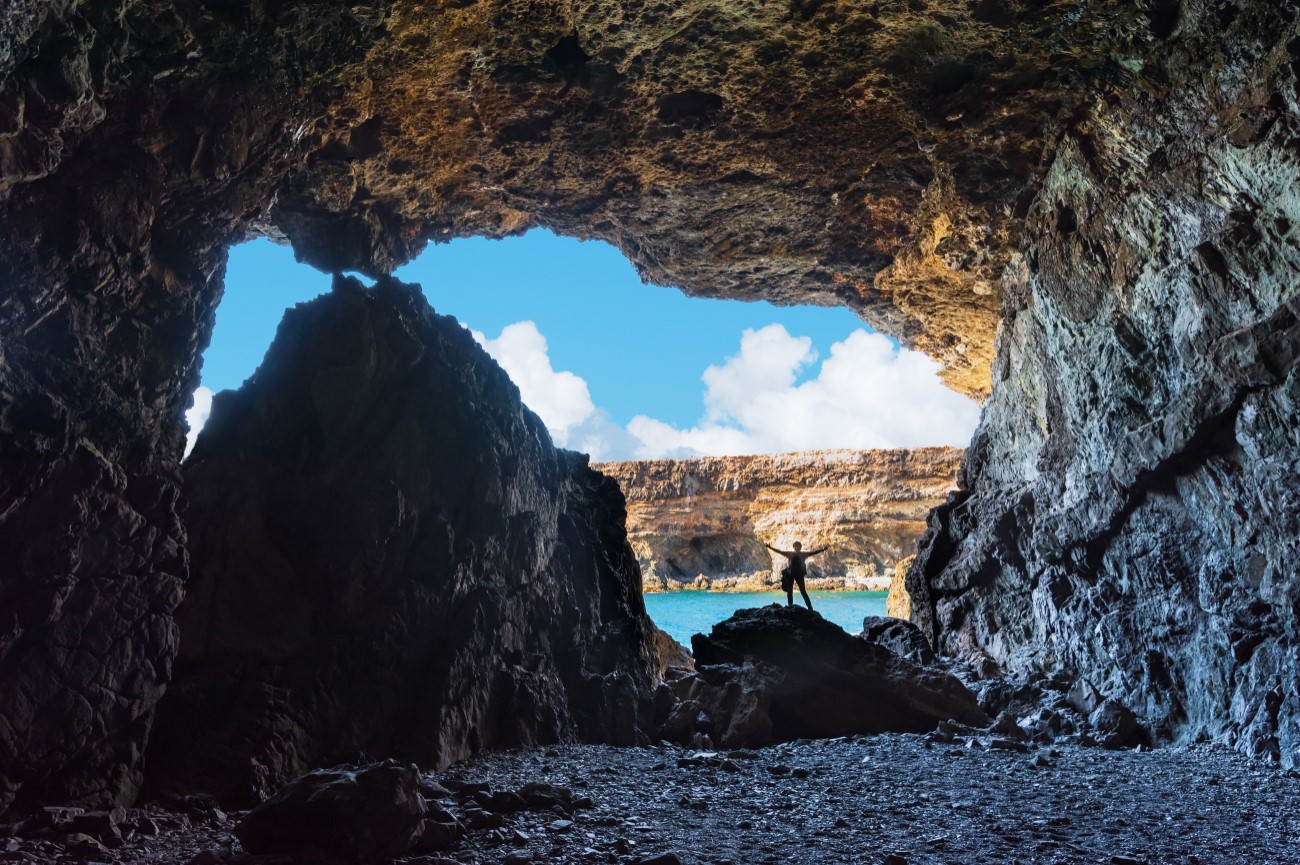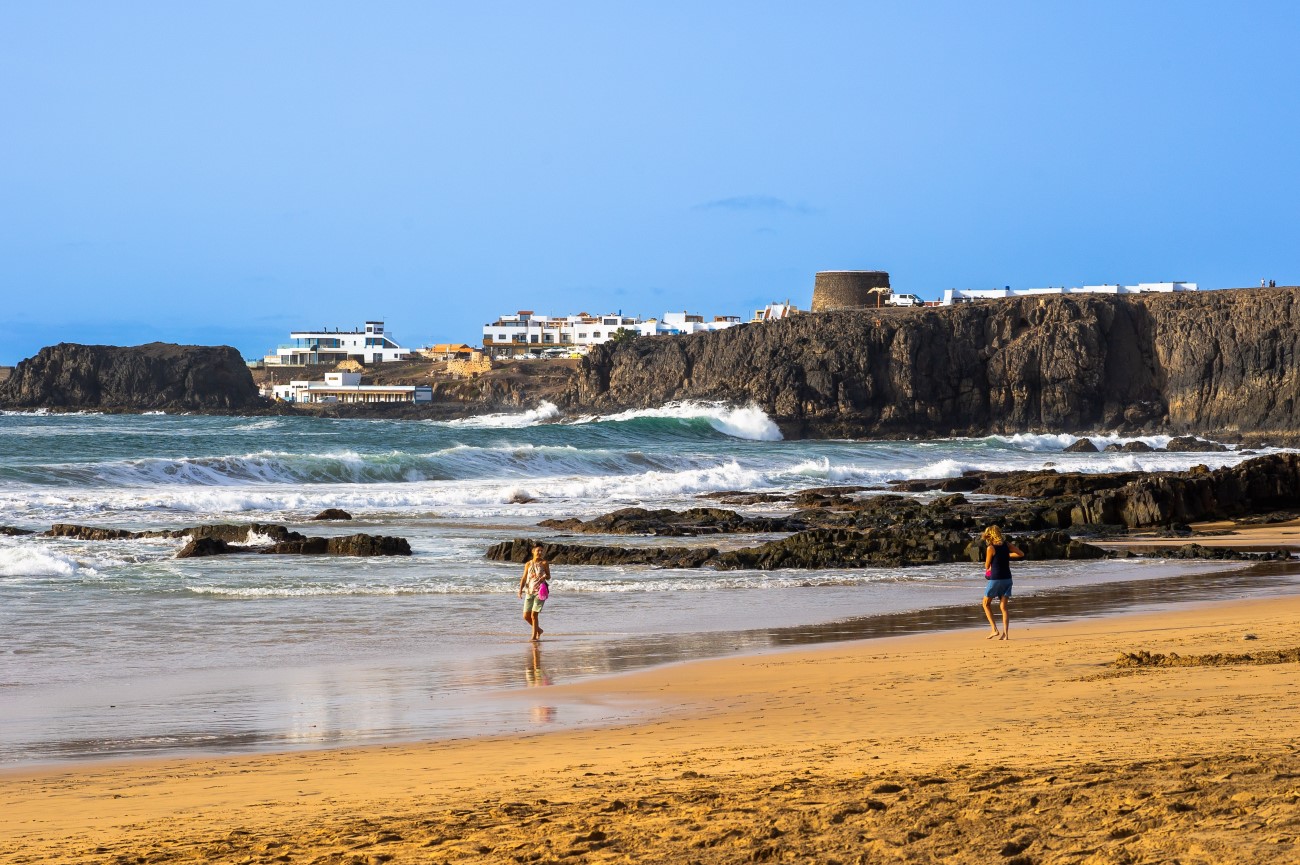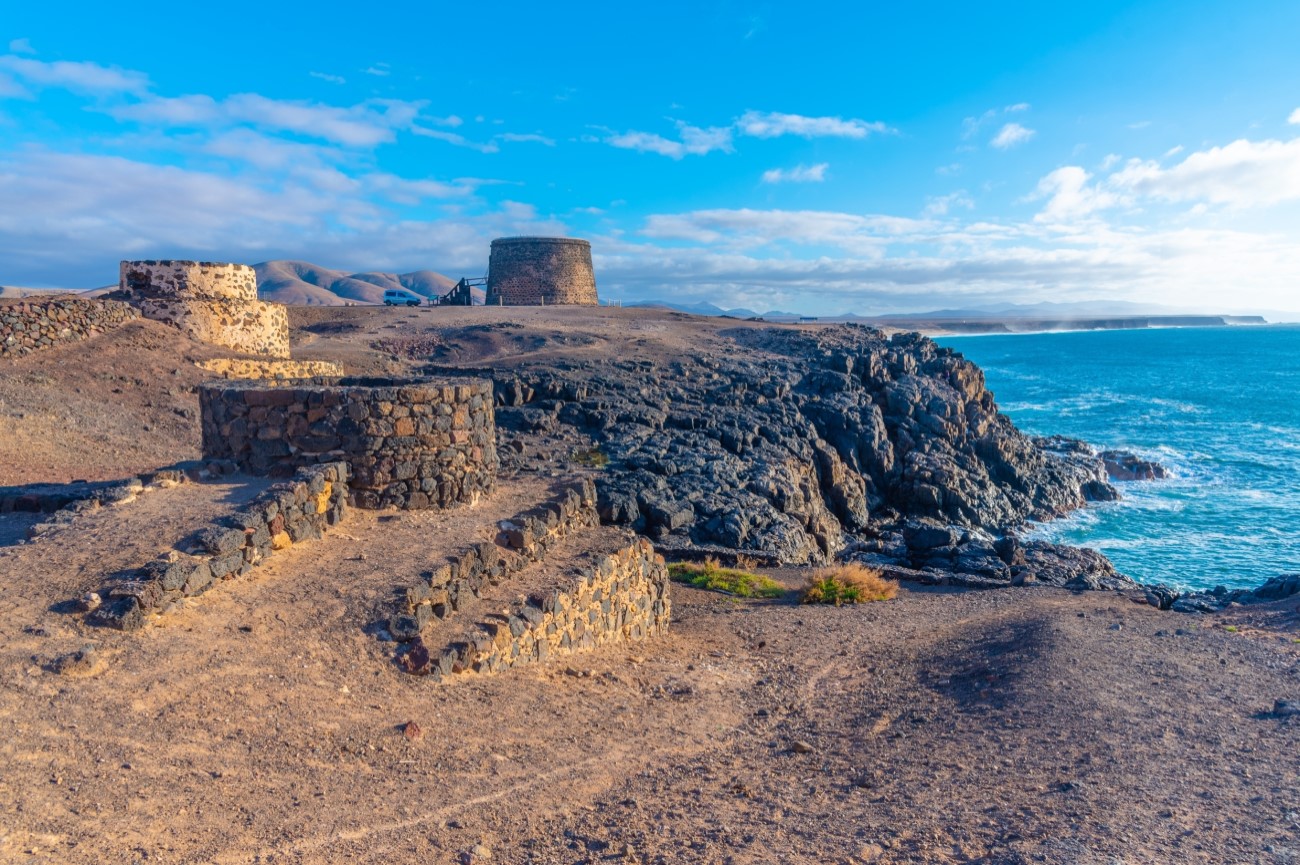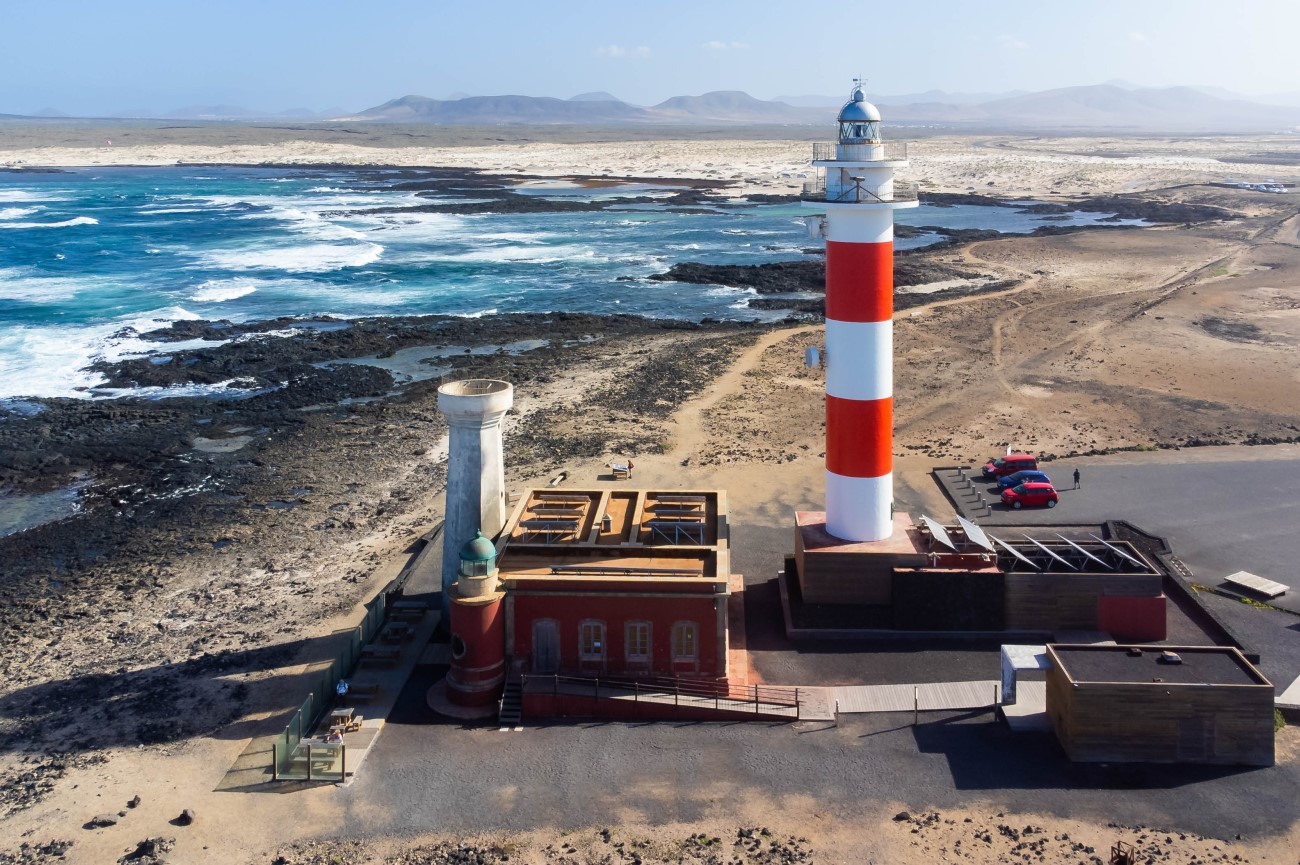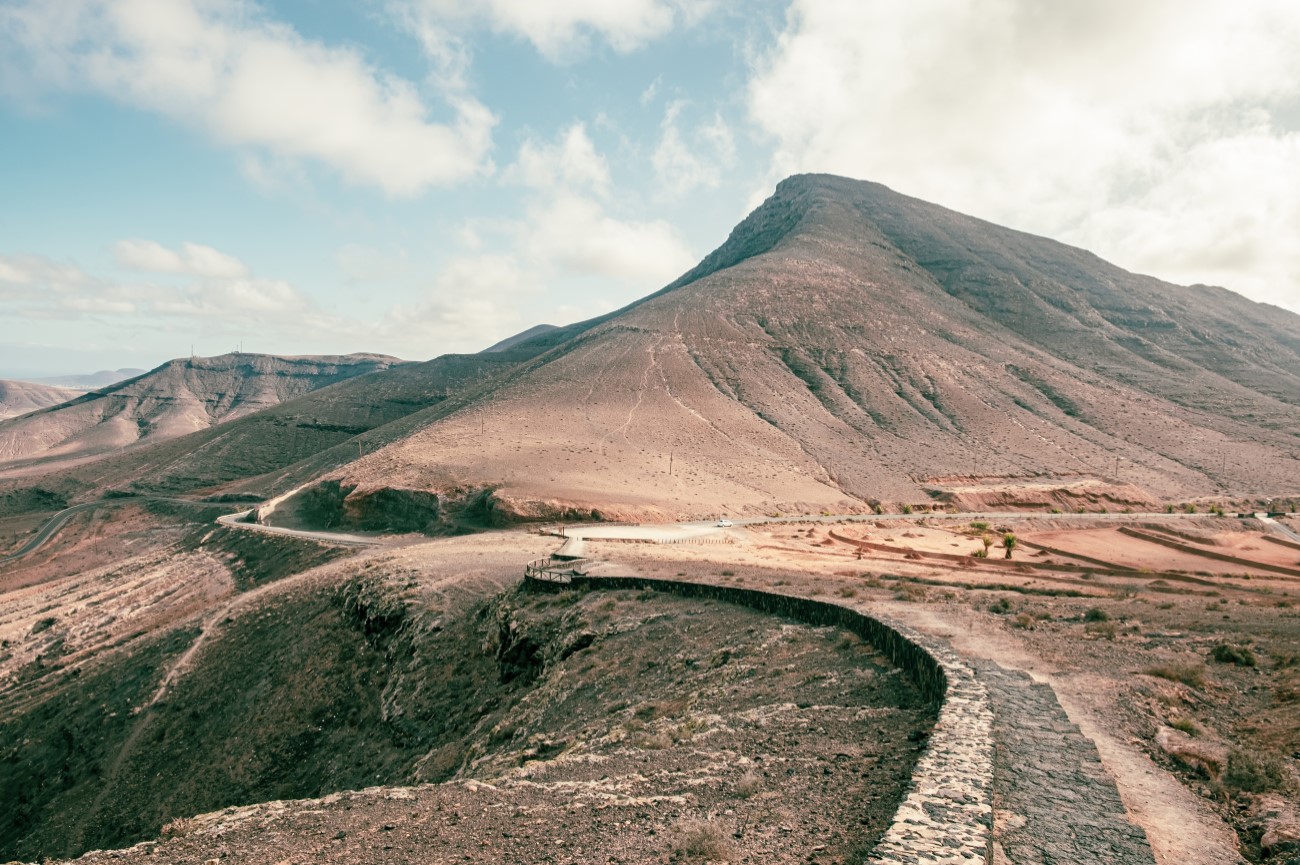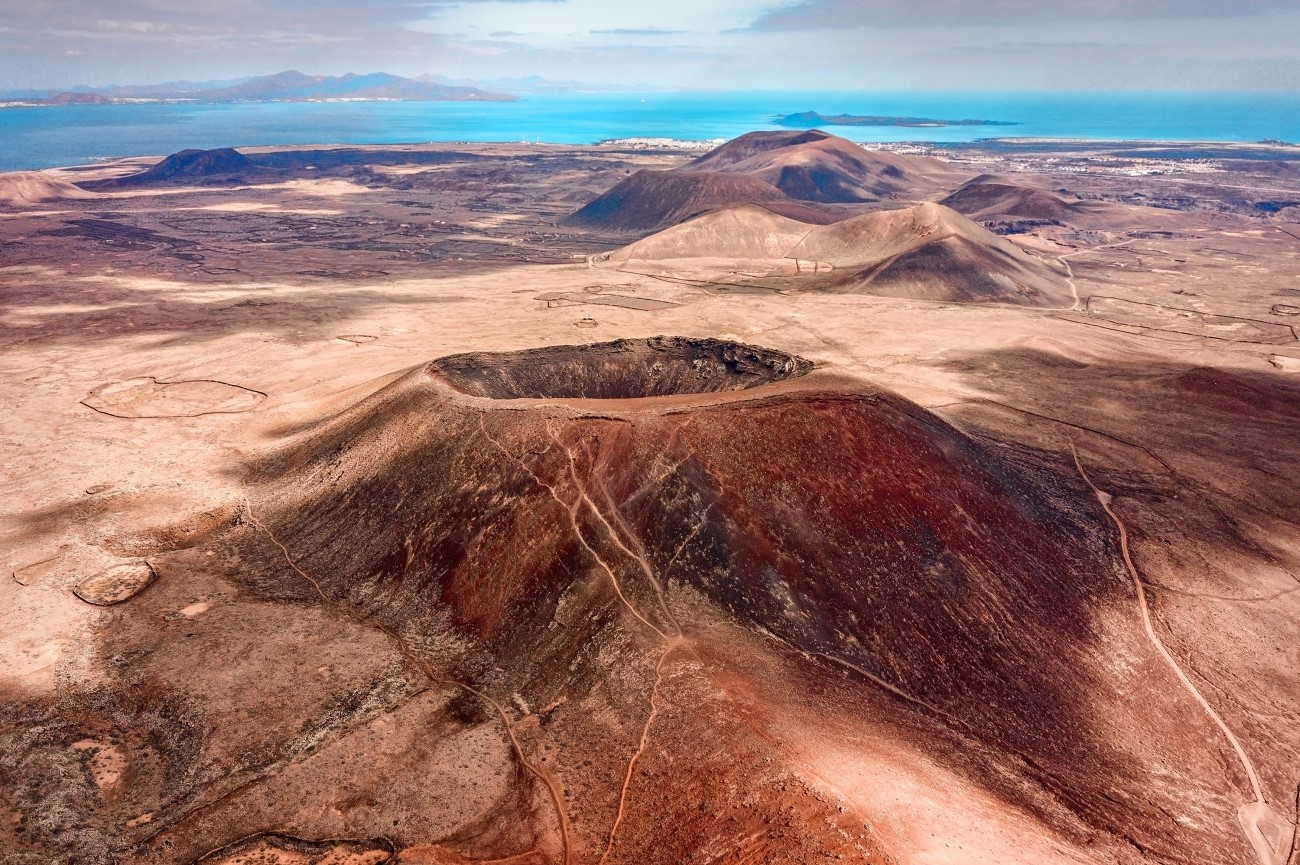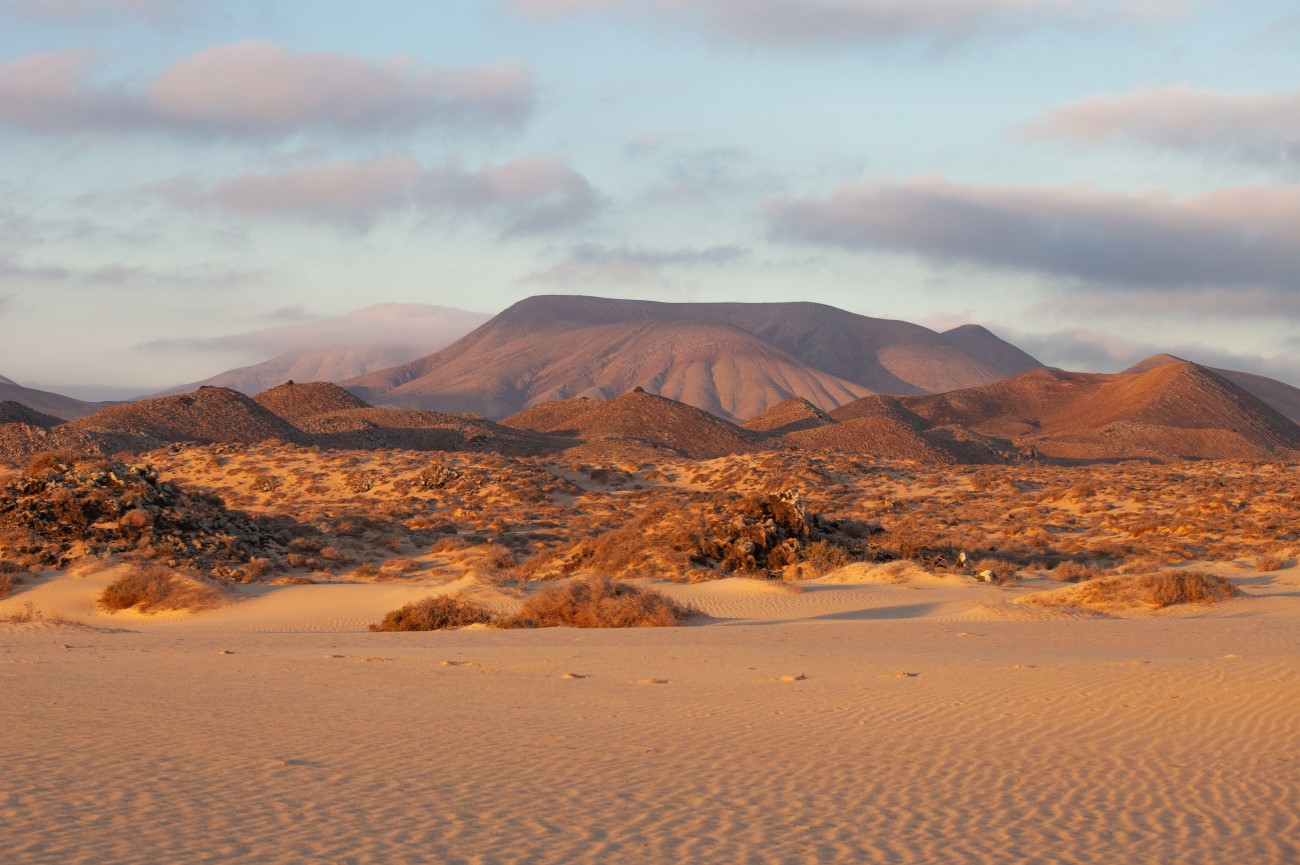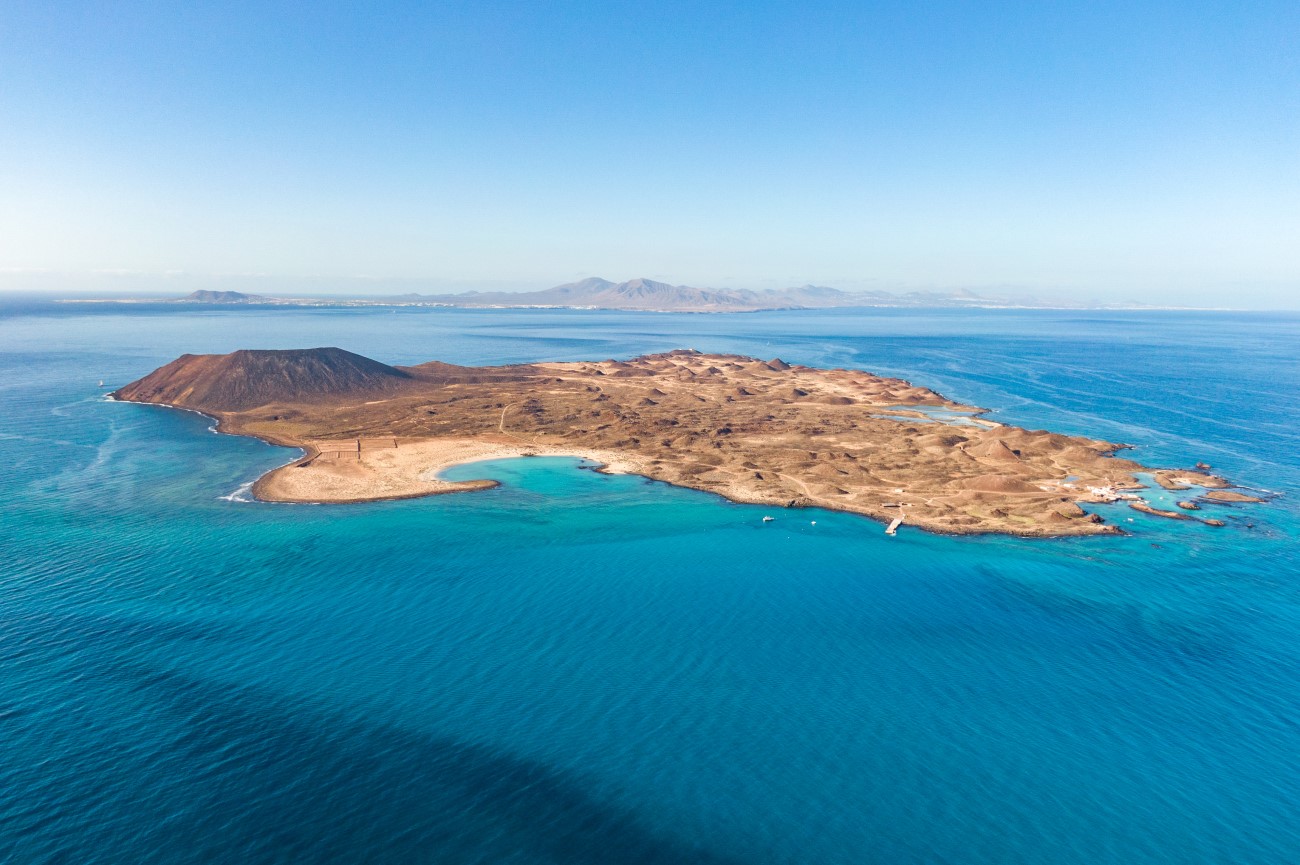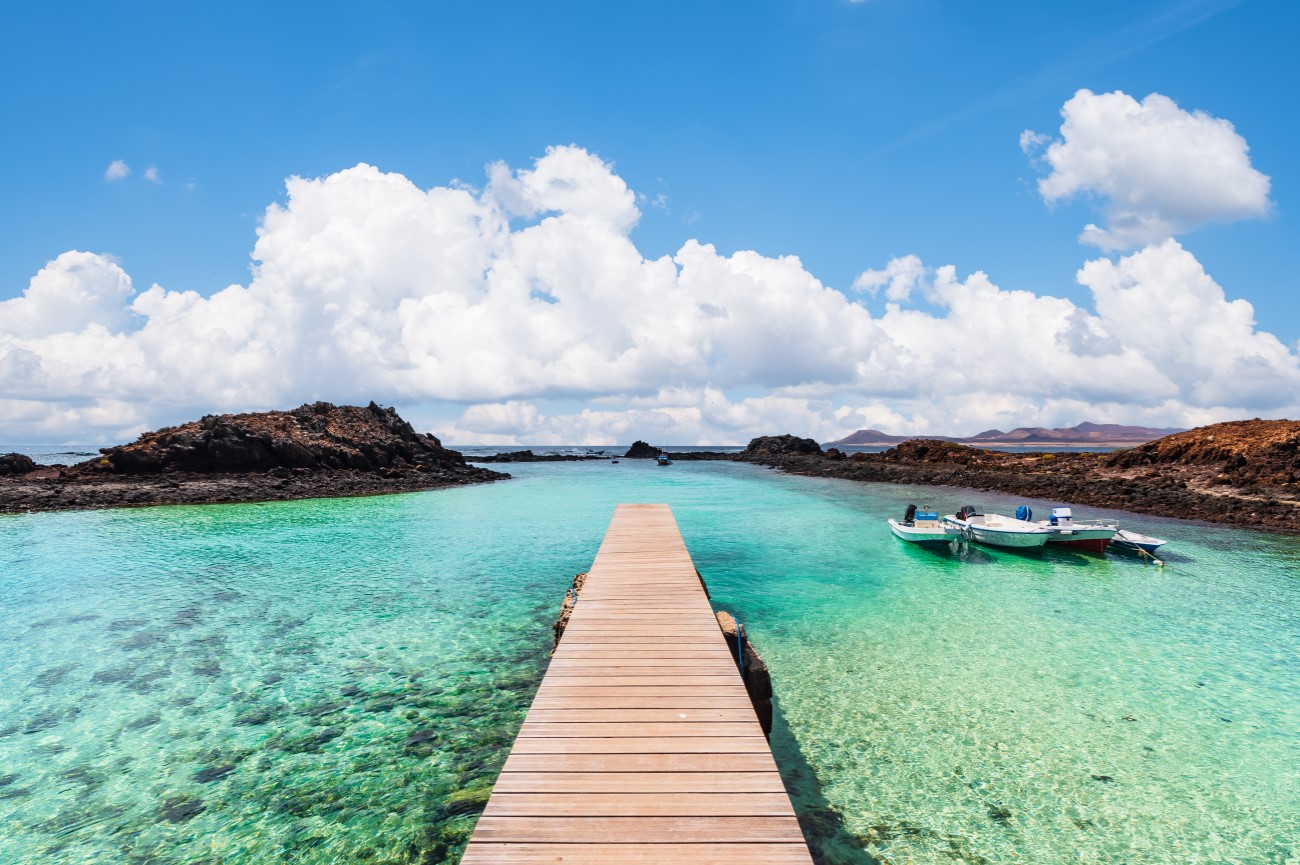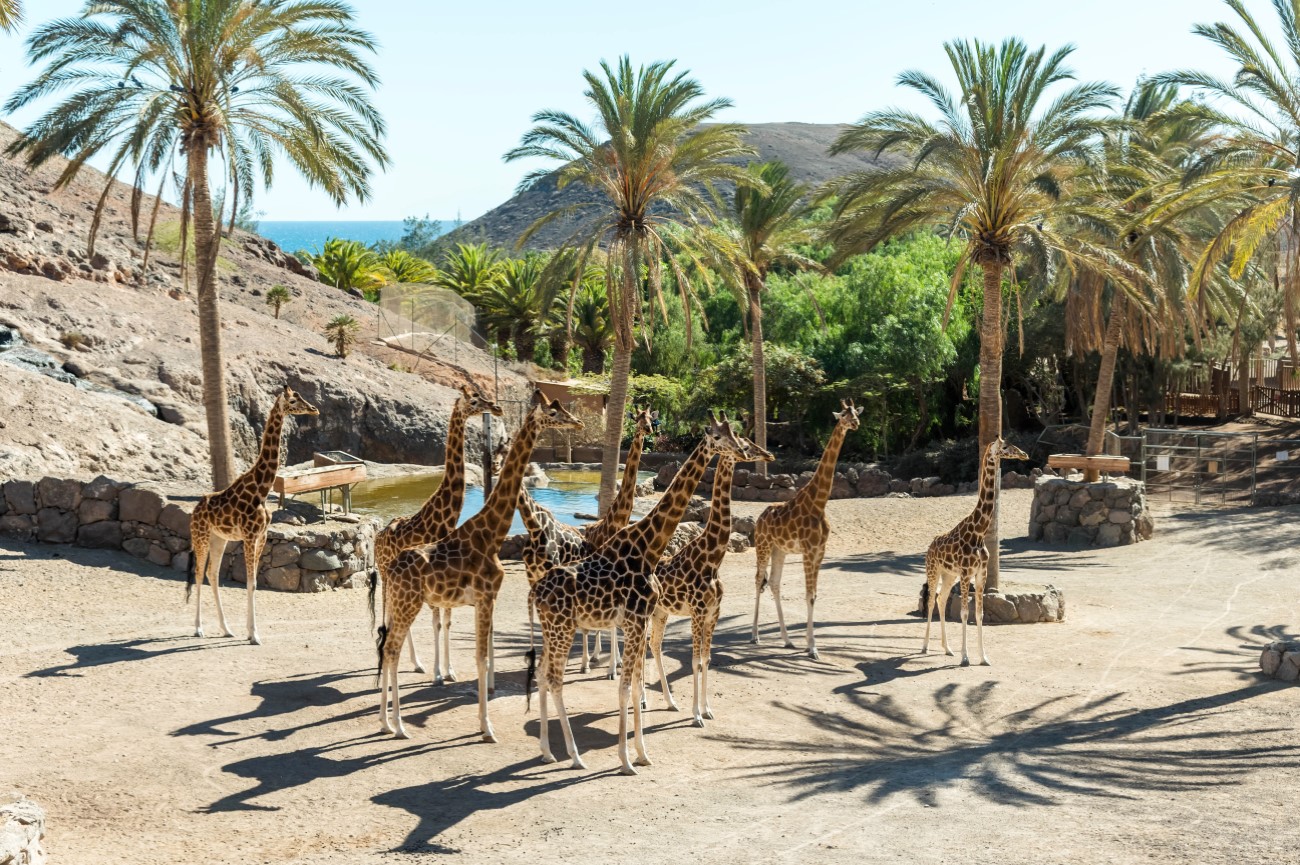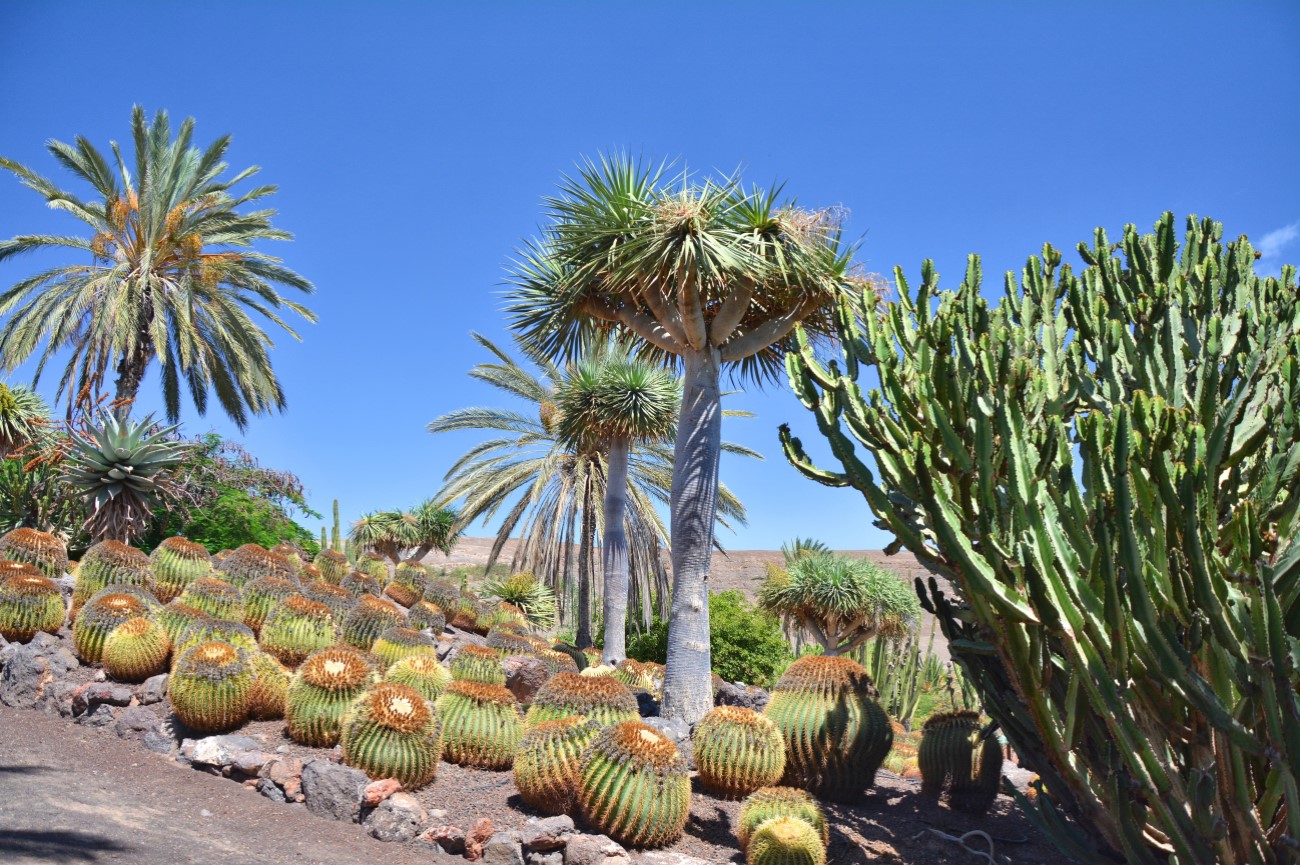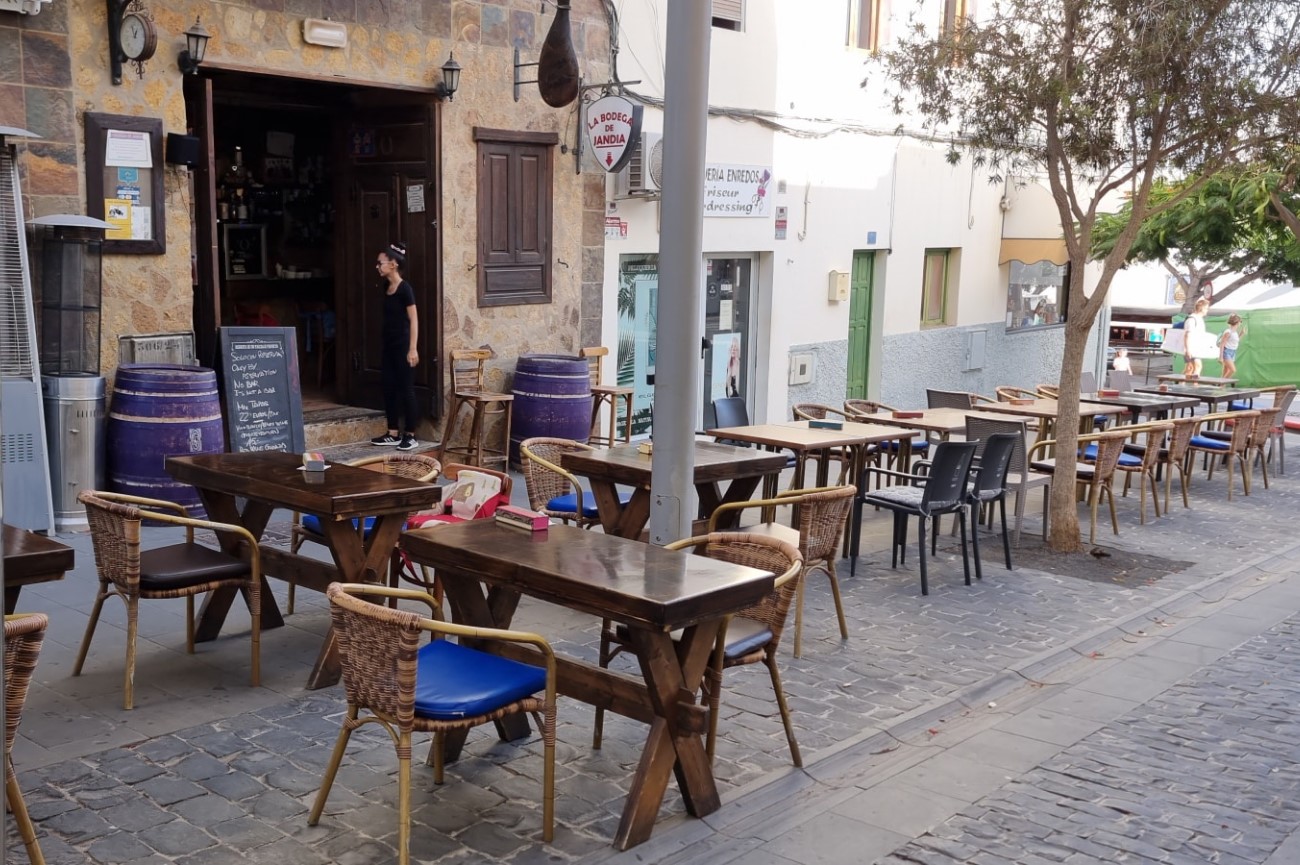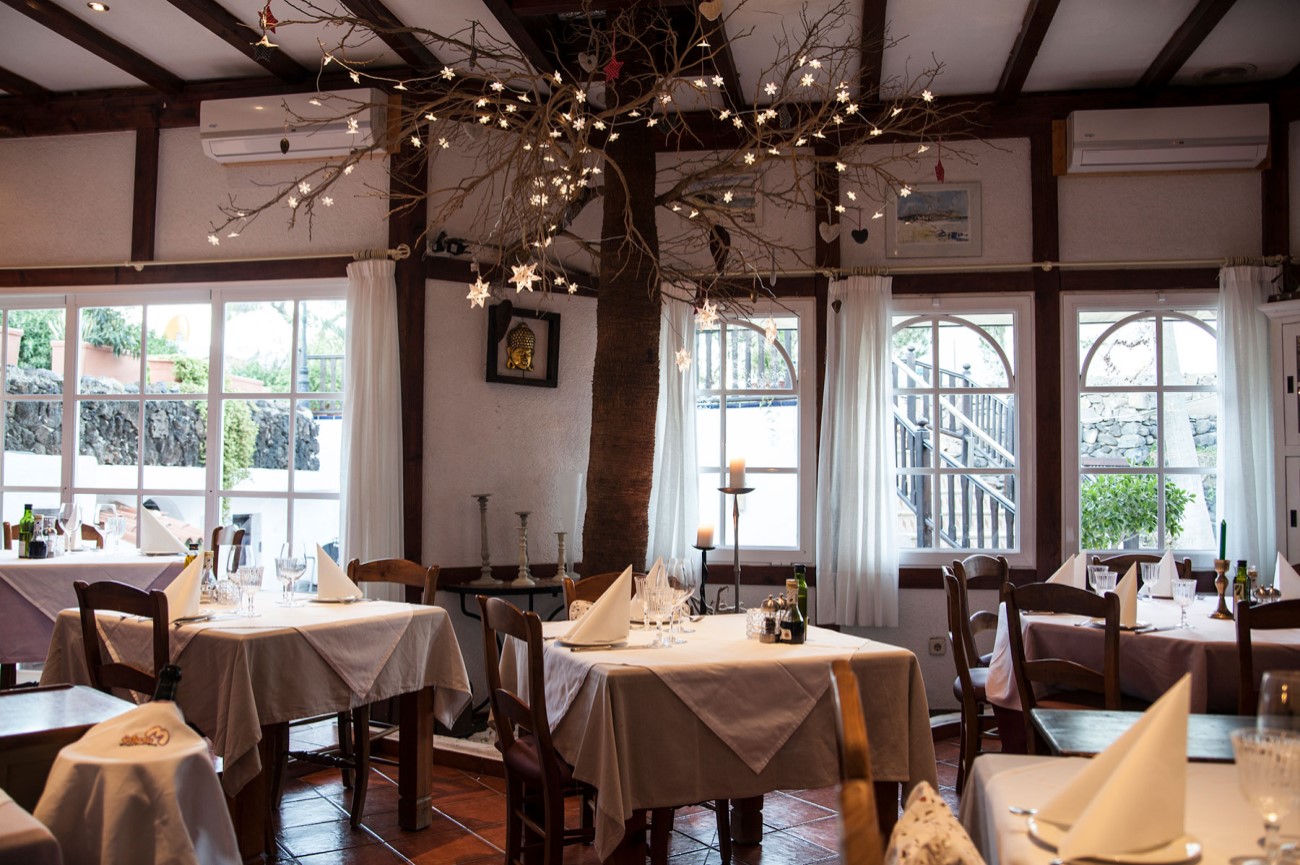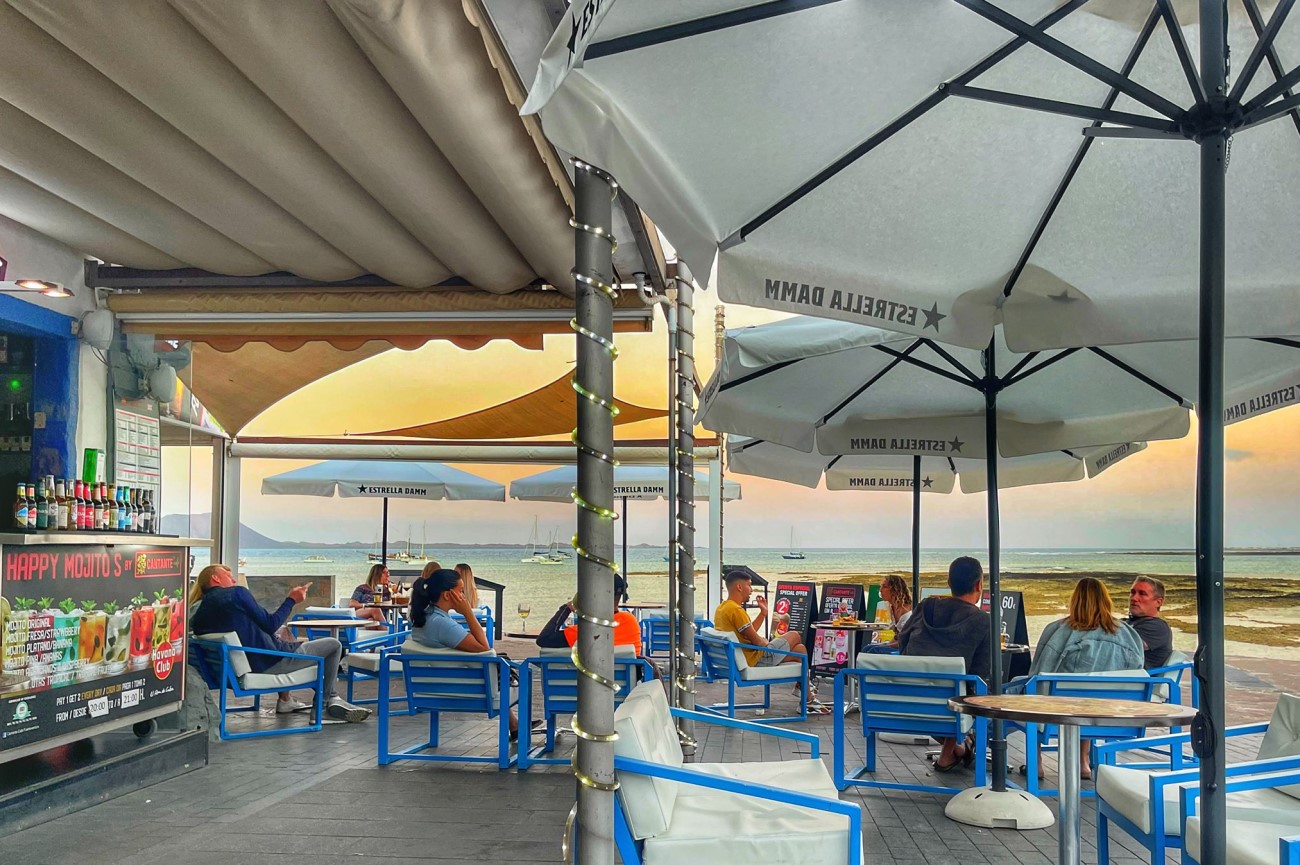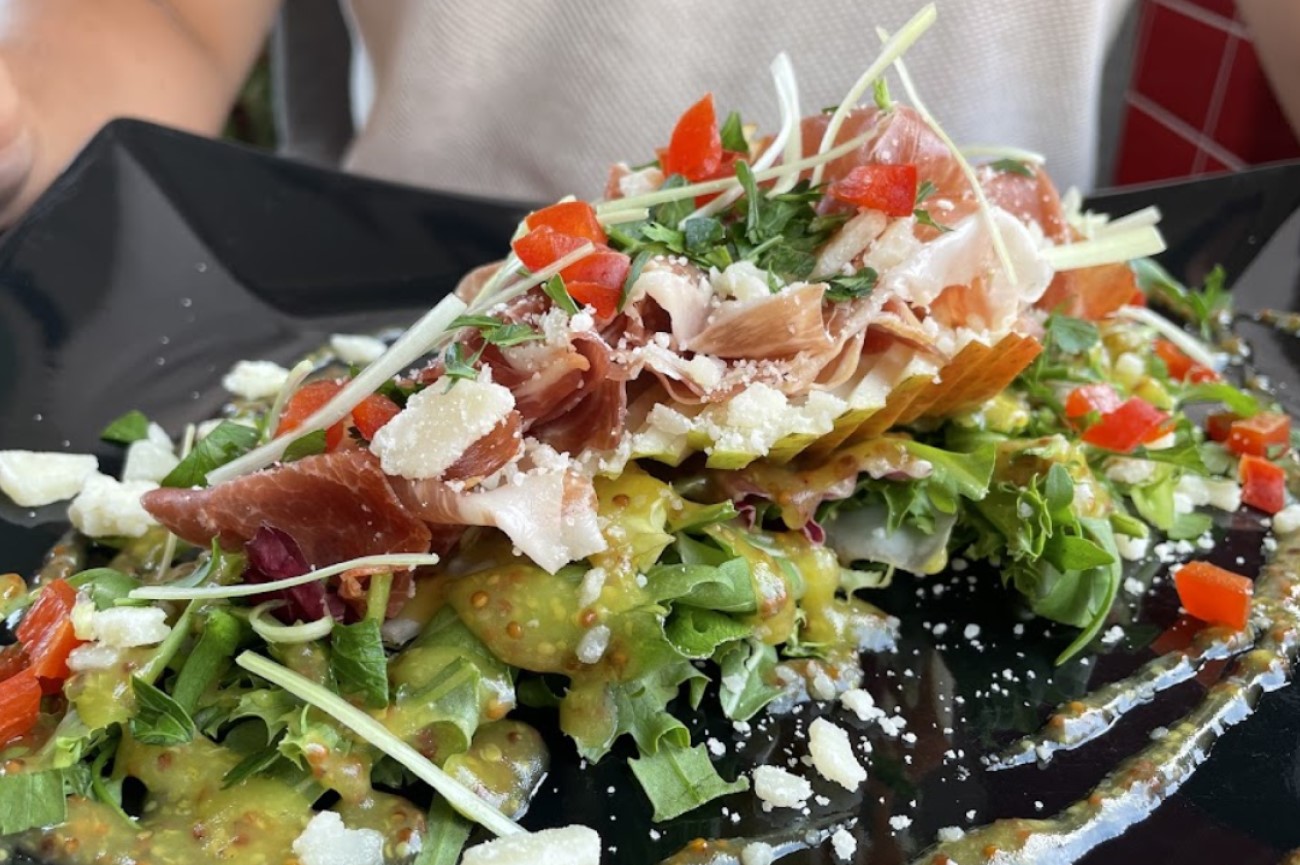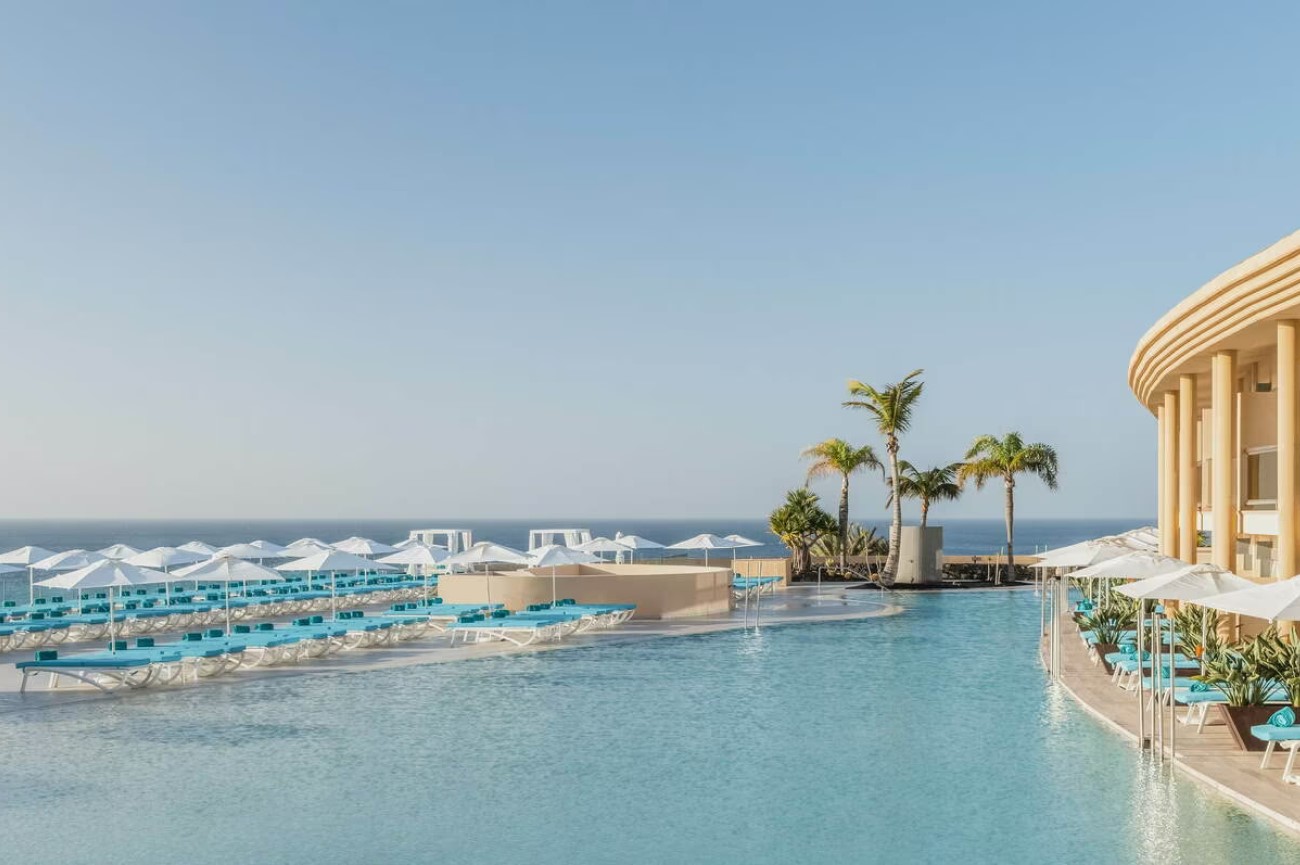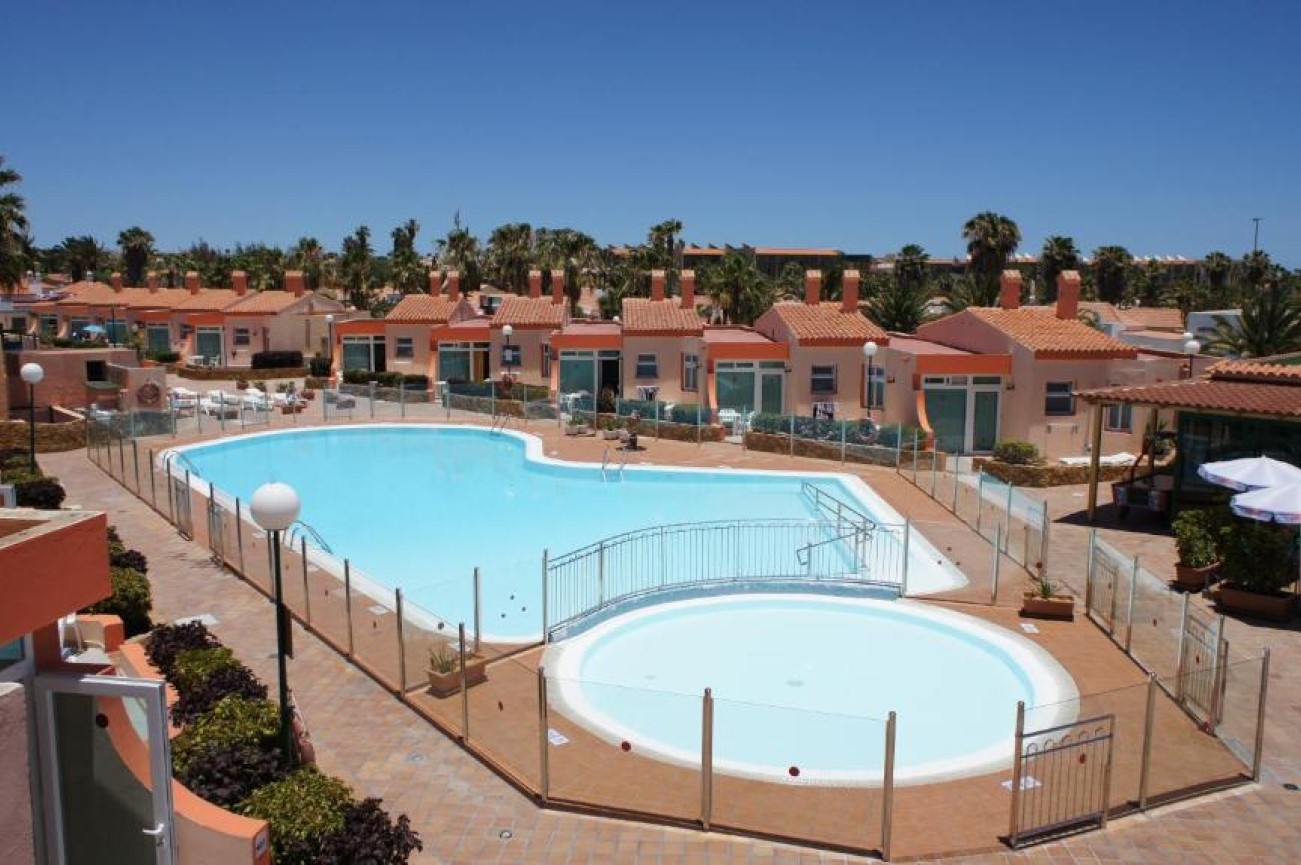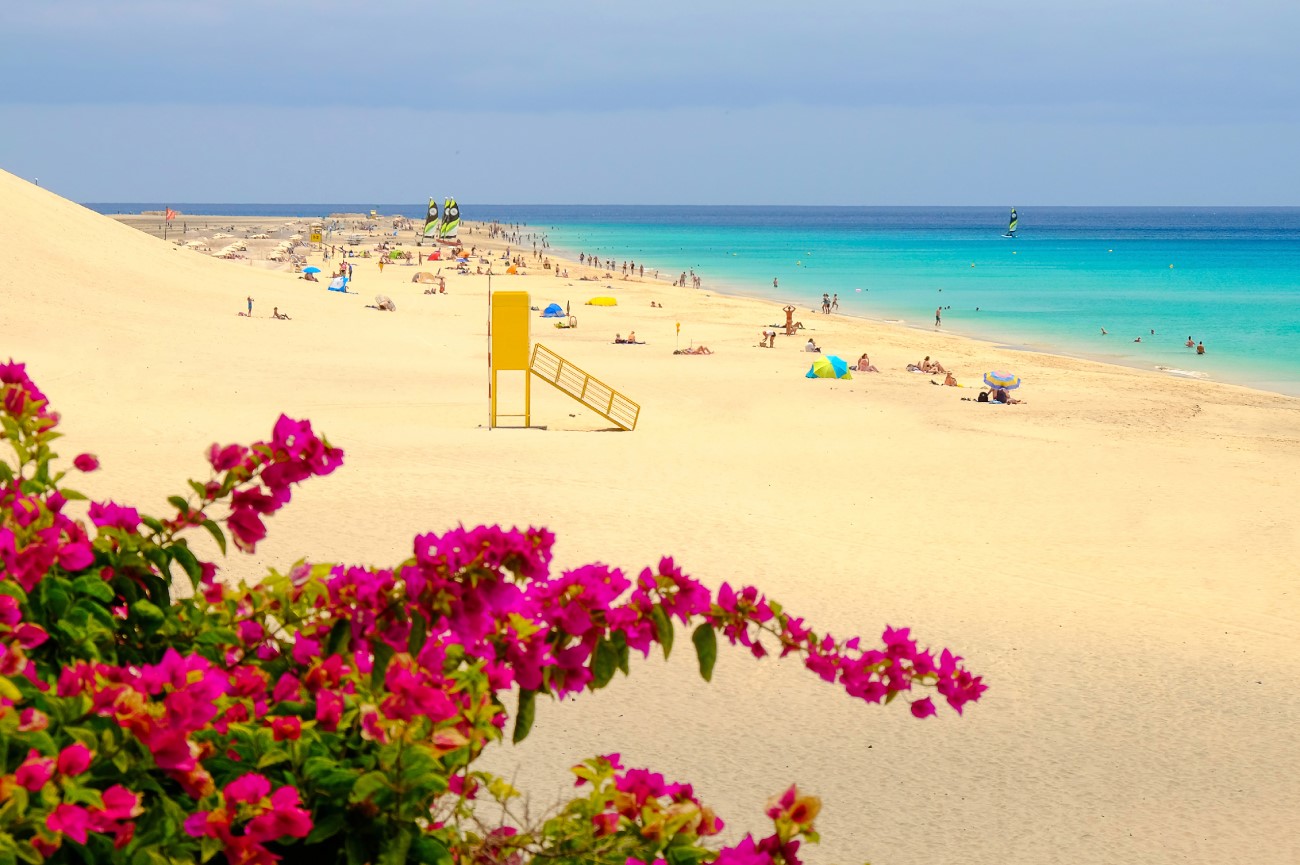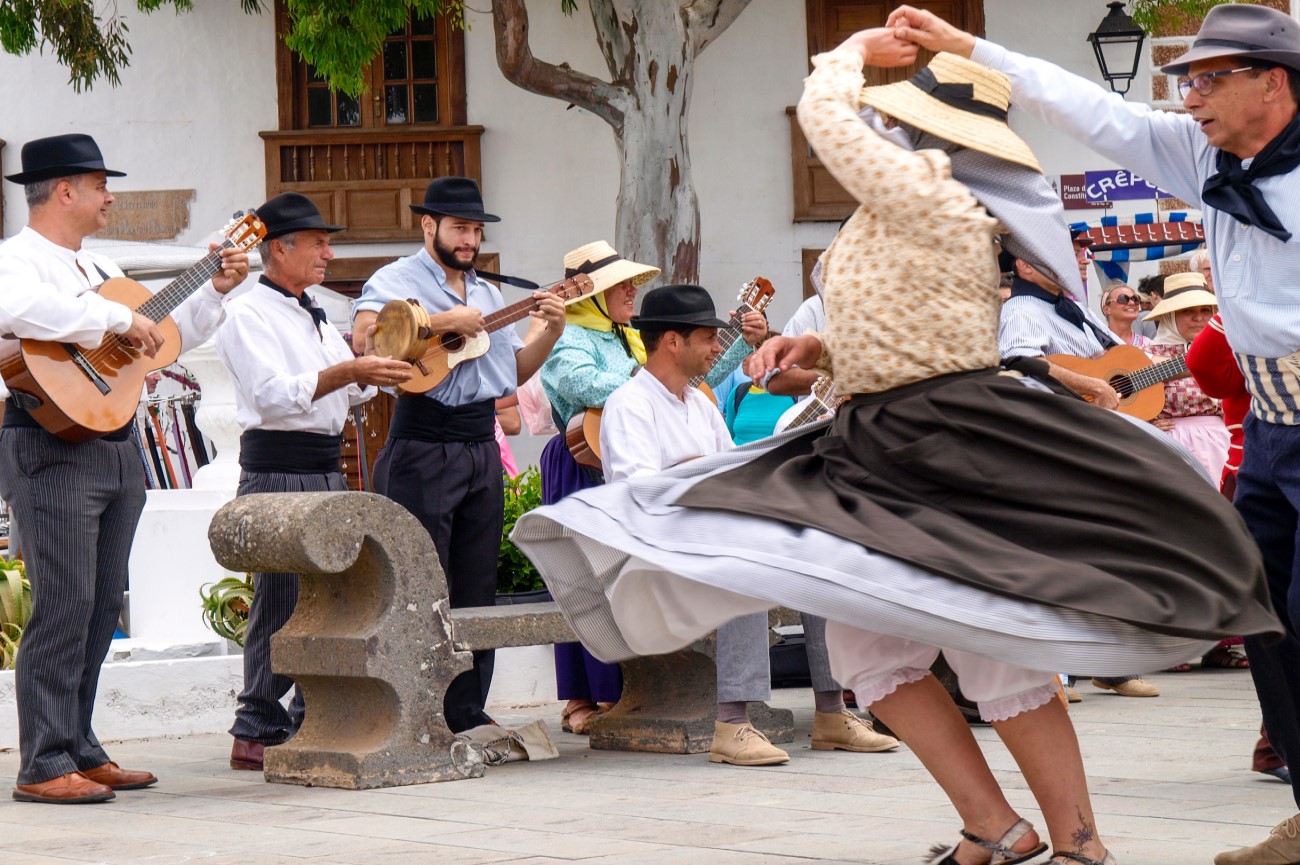Things to do in Fuerteventura, Spain - 4-day itinerary
Only 100km off the coast of Africa, Fuerteventura is a stunning Canary Island renowned for its paradisical beaches. Being close to Africa means the weather is much warmer here, with an estimated 3,000 hours of sunshine all year round. You could spend all day by the beach, but there’s much more to see, from charming villages to iconic viewpoints overlooking mountain valleys ideal for stargazing.
Our four-day itinerary will show you the best things to do in Fuerteventura. We will take you from the coast to the mountains and all the way in between.
Day 1 - Jandía Peninsula

Morning: Jandía Peninsula
We’re beginning our journey on the west side of the island. It’s around here that you’ll find the Jandía Peninsula, renowned for its pristine beaches. At Playa de Sotavento, you’ll have plenty of space for a walk. During high tide, a large lagoon emerges here, attracting many kite surfers. Playa de la Barca, Playa Risco del Paso and Playa de Mal Nombre are other great beaches on this stretch.
Playa del Matorral
Continue along the coast until you reach Playa del Matorral, a beach and nature reserve near the town of Morro Jable. Most people head here to surf or to follow one of the surrounding nature trails. These pass through the reserve and the nearby lighthouse. Like many beaches in Fuerteventura, Matorral also has a naturist section, mainly on the left side. Backing the beach is a series of bars where you can unwind with a cocktail.
Morro Jable
The town of Morro Jable itself is also worth a visit. What started as a small fishing village is now one of the most touristy places on the island, home to over 8,000 people. Beyond the beach, this is the perfect starting point for a bike tour or a visit to the Jandía Natural Park. The town comes alive at night when all the bars fill up.
Faro de Punta Jandía
From Morro Jable, slowly make your way down to the Faro de Punta Jandía. The concrete road eventually turns into a dirt road as you get closer to the edge of the peninsula. It is one of the most scenic rides on the island, with views of both the sea and the black volcanic mountains. At the end of the road, you'll find a lighthouse and a viewpoint where you can watch the waves crash into the cliffs.
Afternoon: Playa de Los Ojos and Faro Punta Pesebre
Back on the road, head to the nearby village of Puerto de la Cruz. Enjoy a swim at Playa el Puertito or continue to the hidden cove of Playa de Los Ojos further up. Then drive off to Punta Pesebre to visit another iconic lighthouse.
Mirador de Cofete and Playa de Cofete
Our next stop is the Mirador de Cofete. To get there, you should follow the road back to Faro de Punta Jandía and turn left towards the mountains. Standing at the top, you’ll have one of the most incredible views of the whole island. If you want, you can continue the journey down to Playa de Cofete. However, we recommend taking a jeep or booking a tour to cover this stretch as the road is in poorer condition. The challenging access means that the 12km beach is never too crowded, and you may have the beach all to yourself. Note that the currents can be a bit strong here, so be careful if you’re going for a swim.
Villa Winter
Within Playa de Cofete, you’ll find a striking 20th-century house known as Villa Winter. Erected in the 1940s, this remote settlement has often been connected with the Nazis. Legend says the villa was used as a meeting point for supplying a German submarine fleet during World War II.
Day 1 - Jandía Peninsula Tour Map
Day 2 - Inland

Morning: Tarajalejo
Set off to explore the island’s interior, starting at Tarajalejo. This picturesque village doesn’t receive many visitors, meaning it’s often pretty quiet. It is a perfect place to stay on the island if you want to escape the crowds but still enjoy access to restaurants and bars. Its central location makes it the ideal base to explore the island from north to south.
Faro de la Entallada
Heading east, you’ll soon reach the town of Las Playitas. Further down the coast is a lighthouse called Faro de la Entallada. From here, you can enjoy beautiful views of the east side, filled with impressive cliffs and mountains. This is also a perfect place to watch the sunrise.
Pozo Negro
Continue your journey to Pozo Negro, a small fishing village with whitewashed houses and a large pebble beach. Once a thriving port town, now you can only spot a few fishermen hanging around the colourful boats. After wandering through town, settle down with a coffee at one of the local cafés overlooking the sea.
Afternoon: Betancuria
Betancuria is one of the oldest settlements in Fuerteventura, being the island's capital until 1834. Founded in the 15th century by Jean de Béthencourt, it is renowned for its historical attractions. Start by visiting the Santa María church, then head to the Betancuria Archaeological Museum, where you can learn more about the ancient inhabitants of Fuerteventura, known as the majos. Finally, head up to the Morro Velosa viewpoint to take in the lush mountainous landscape.
Mirador de Las Peñitas
Just a few miles from Betancuria is another impressive viewpoint, the Mirador de Las Peñitas. If you’re lucky, you may spot a squirrel or two hopping around the edge of the walls.
Pájara
Continue through the FV-30 to the end, and you’ll reach the small village of Pájara. Take your time wandering around the traditional houses before venturing inside the Iglesia de la Virgen de la Regla. The church features Baroque altars and stunning porticoes with Aztec elements, influenced by the architects' travels through South America.
Cuevas de Ajuy
Take a small detour to the coastal village of Ajuy, and unwind by the beach. On the north side, there is a trail that leads you to the Cuevas Negras. These caves were formed millions of years ago by lava flows, making them one of the most important geological formations on the island. The site covers nearly 32 hectares, so there’s plenty to capture.
Playa de la Pared
Another village worth visiting is La Pared. It is home to stunning beaches backed by cliffs which provide the perfect vantage point to watch the sunset.
Mirador Astronómico de Sicasumbre
Although La Pared is a beautiful place to end your day, we recommend heading to Mirador Astronómico de Sicasumbre for the night. Located 300 metres above sea level, it is an ideal spot for stargazing. There are information panels dotted around, which explain the different constellations you can see. Make sure to bring an extra layer, as it can get pretty cold up here.
Day 2 - Inland Fuerteventura Tour Map
Day 3 - Northwest

Morning: El Cotillo
El Cotillo is a small town on the west coast of Fuerteventura. It has an old town full of history and incredible beaches resembling the Caribbean with its white sand and crystal clear waters. These include Caleta del Marrajo, Playa de Los Lagos and Playa de la Concha. Other beaches like Piedra Playa or Playa del Águila are more popular among surfers. Another place worth visiting is the El Tostón Castle, a 14th-century fortress used to defend the town against pirate attacks.
Faro del Tostón
Still near El Cotillo, you’ll find the impressive Faro del Tostón, a remote lighthouse which now houses a traditional fishing museum. The beaches around this area often have fewer crowds, like the Playa de Los Charcos.
Afternoon: Mirador de Vallebrón
Right in the heart of the island is Tindaya Mountain, a place that is said to have magical properties. According to a legend, sick people would head to the mountain and return cured. The best place to take in this natural landscape is from the Mirador de Vallebrón.
Los Molinos
End your day with a visit to the quiet fishing village of Los Molinos. Take a wander through its narrow streets lined with whitewashed houses. Then head to a bar and enjoy a glass of wine overlooking the sea.
Day 3 - Northwest Fuerteventura Tour Map
Day 4 - Northeast

Morning: Calderón Hondo
We’re spending our last day exploring the northernmost part of the island, starting in Calderón Hondo. It is due to the eruption of this volcano that the island of Fuerteventura and the little islet of Isla dos Lobos emerged 50,000 years ago. You can explore the volcano’s crater by hiking the three-mile circular trail starting in Lajares. The route can be a bit challenging as there are a few steep sections. Although everything is signposted, we recommend coming up with a guide who can tell you more about the history of the place. From the top of the crater, you can capture the north of Fuerteventura and even a bit of the neighbouring island of Lanzarote. You’ll also see lava fields created by volcano eruptions over the years.
Corralejo Natural Park
After your morning hike, head down to the coastal town of Corralejo. The surrounding natural park of the same name is a protected area stretching 2,600 hectares. It includes beaches and the largest dune system in the Canaries. In this stretch, you can find both well-equipped beaches, such as Grandes Playas de Corralejo and other secluded spots, like Playa Alzada or Playa del Moro. Also, make sure to visit Red Mountain on the southern side of the park.
Afternoon: Isla de Lobos
Spend your afternoon exploring the nearby Isla de Lobos, catching the boat from Puerto de Corralejo. Just 2km off Fuerteventura, this little islet is full of trails and stunning beaches like Playa de La Concha and Puertito. This last one is a favourite spot for snorkelling thanks to its crystal clear waters. After relaxing by the beach, you can hike up to La Caldera volcano or the Punta Martiño lighthouse. It takes around 15 minutes to reach the Isla de Lobos by boat. Note that there is a limit of people that can visit the island per day, so you need to request permission in advance from the Council of Fuerteventura. If you join a tour, however, this will be done for you.
Day 4 - Northeast Fuerteventura Tour Map
Top things to do with kids in Fuerteventura
Fuerteventura has all the facilities for a relaxing family holiday. There are plenty of beaches to explore, and the calm waters are ideal for a swim. For even more options, hop on a boat to nearby Isla de Lobos and enjoy a snorkelling session. When you get tired of the beach, you can always visit the island’s coastal towns, explore volcanic caves or follow one of the many trails through the mountains. Kids will also enjoy Oasis Park, a zoo with several animal shows and a large botanical garden.
Where to eat in Fuerteventura
As the second largest island in the Canaries, Fuerteventura offers a wide range of restaurants where you can sample local cuisine or international treats. Goat meat is a popular ingredient, part of the traditional Majorero stew paired with vegetables. The goat’s milk is used to make Majorero cheese and frangollo, a dessert which also has sugar, almonds, raisins and gofio (roasted corn flour). Of course, there is plenty of seafood too, including limpets, wreckfish, and croaker. Below are some of the best places to eat in Fuerteventura:
- La Bodega de Jandia: This traditional bodega is located in Morro Jable. It serves a variety of Spanish tapas and other popular dishes like ropa vieja (beef stew with vegetables) and gofio mousse.
- Restaurante Marabú: Enjoy a meal on the outdoor terrace of Marabú, surrounded by palm trees and flowers. The menu focuses on local ingredients, with the chefs using mainly homegrown produce. There is also a cellar with a wide range of Spanish wines and liquors.
- Cantante Café: Overlooking the sea, this laidback spot offers a variety of international dishes, including an affordable breakfast deal. The bar is stocked with more than 100 types of rum, making it the ideal place for an afternoon cocktail.
- The Ugly Duckling: You’ll find this cosy restaurant in the heart of Corralejo. It specialises in Scandinavian cuisine, a good alternative if you want to try something beyond the regional dishes. It is quite popular, so make sure to book a table in advance.
Where to stay in Fuerteventura
- Iberostar Selection Fuerteventura Palace (5 stars): This luxurious hotel offers easy access to the island's southern beaches. Most rooms feature balconies with sea views. Guests also have access to multiple restaurants, pools, a gym and a spa. All-inclusive packages are available.
- Playitas Resort (4 stars): As the name suggests, this resort is located in Las Playitas. It offers multiple sports facilities, including paddle tennis, climbing and golf. Families can take advantage of the kids club and explore all the restaurants, bars and pools.
- Castillo Playa (2 stars): If you’re looking for a cheaper alternative, Castillo Playa is a perfect choice. Located in Caleta de Fuste, it features a series of bungalow-style apartments equipped with kitchens and terraces. Other amenities include an outdoor pool, a sauna and a playground.
Best time to visit Fuerteventura
Although the weather is great for visiting all year round, the best time to visit Fuerteventura is around late spring or early summer. The warm temperatures and the lack of rain make this the perfect time to hit the beach. You’ll also have the chance to capture some of the island’s most popular festivities.
Fuerteventura Festivals
- Carnival: Around February and March, Fuerteventura comes alive with carnival celebrations. People dress in costumes, and parades fill the streets of many towns on the island, especially around the capital, Puerto del Rosario, but also in Antigua, Tuineje, Betancuria and Pájara. Highlights include the election of the Carnival Queen and the bands' competition.
- Fiestas de la Virgen de la Peña: This is one of the oldest festivities in the Canary Islands and by far the most important in Fuerteventura. Held on the third Saturday of September, it is dedicated to La Peñita, the island’s patron saint. During the event, locals carry the statue of Virgen de La Peña to her shrine. Beyond the procession, you can also count on live music and Canarian wrestling.


